Transform your outdoor space into a captivating floral paradise with these inspiring rose garden designs. Whether you're working with a sprawling backyard or an intimate courtyard, roses offer endless possibilities for creating stunning landscapes that evolve with the seasons. From classic formal layouts to contemporary wild gardens, each approach brings its own unique charm and character. These carefully curated rose garden ideas embrace current trends including sustainability, romantic cottage aesthetics, and innovative vertical growing solutions. Each design concept represents a complete theme that harmoniously combines rose varieties, companion plants, structural elements, and design principles to create cohesive outdoor environments that celebrate the timeless beauty and intoxicating fragrance of roses.
1. Formal Rose Garden Parterre
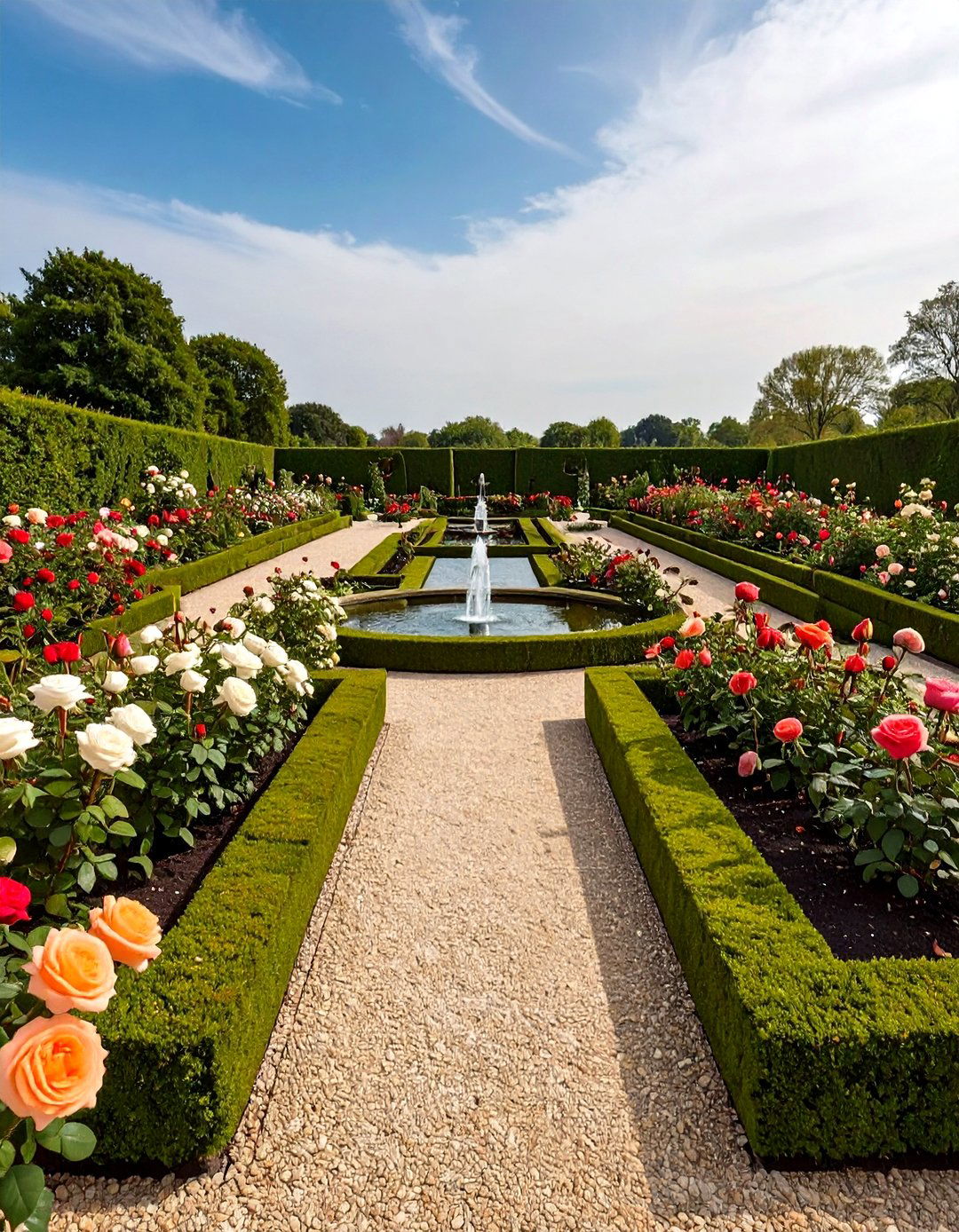
Create an elegant formal rose garden featuring geometric patterns reminiscent of classic European estate gardens. This sophisticated design centers around symmetrical beds outlined with precisely trimmed boxwood hedges, filled with hybrid tea roses arranged by color in neat, organized rows. Crushed gravel pathways intersect at right angles, leading to a central water feature or ornamental statue. The structured layout incorporates rose standards for vertical interest, while maintaining clean sight lines throughout the space. Traditional materials like natural stone edging and formal benches enhance the refined atmosphere. This timeless approach works particularly well with large properties where the grand scale creates impressive visual impact. Select disease-resistant varieties in classic colors such as deep red, pure white, and soft pink to maintain the sophisticated palette year after year.
2. English Cottage Rose Garden
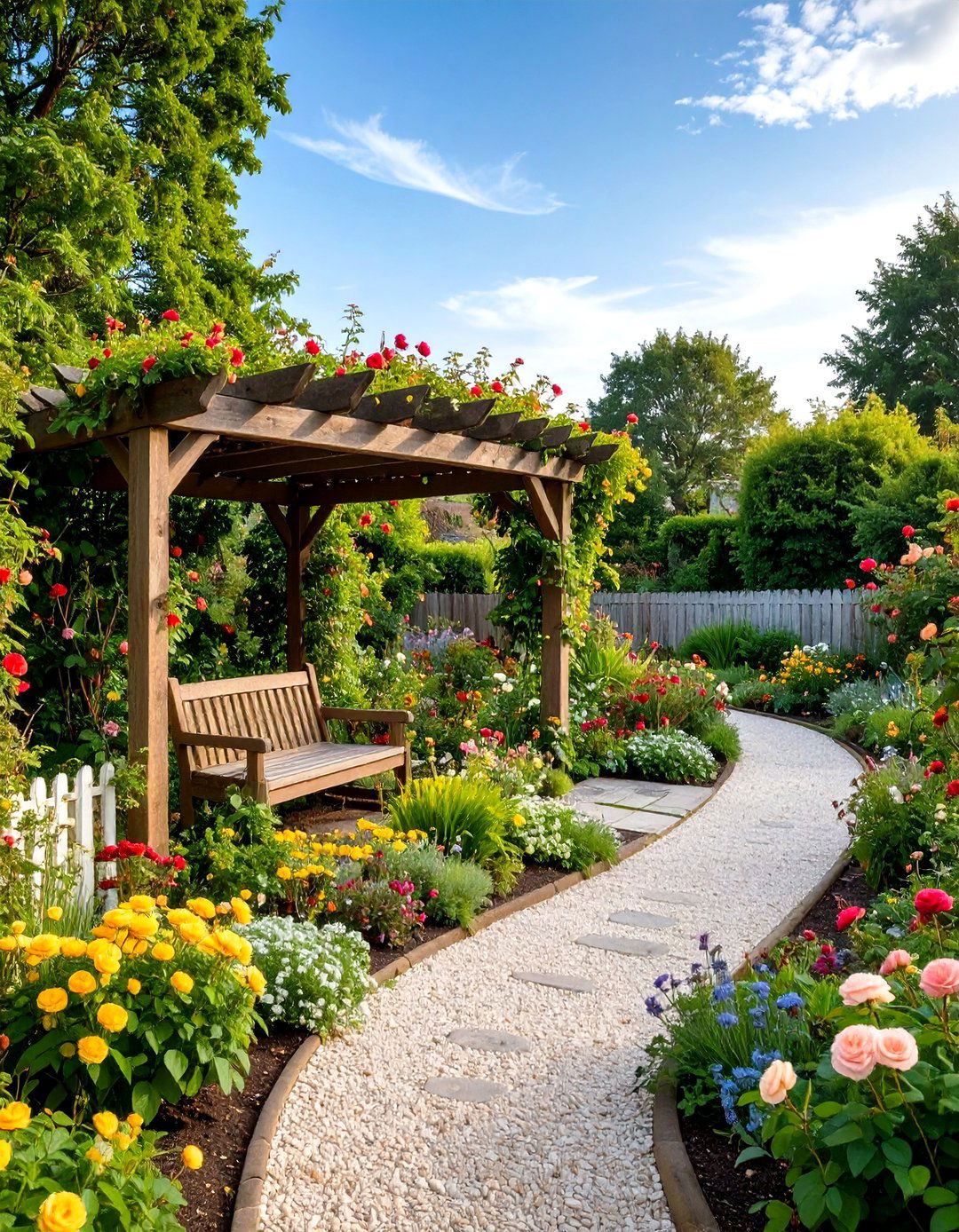
Embrace the romantic, informal charm of an English cottage garden where roses sprawl naturally among herbs, perennials, and vegetables in delightful abundance. This relaxed design features climbing roses cascading over weathered wooden arbors, shrub roses interplanted with lavender and catmint, and rambling varieties tumbling over old stone walls. Winding gravel paths meander through densely planted borders filled with foxgloves, delphiniums, and hollyhocks that self-seed freely. Traditional elements include white picket fencing, rustic garden gates, and vintage terracotta pots overflowing with fragrant roses. The key lies in allowing plants to grow naturally without rigid pruning, creating that lived-in, cottage garden aesthetic. Choose English roses from David Austin's collection, old garden roses, and heritage varieties that offer intense fragrance and repeat blooming throughout the growing season.
3. Mediterranean Rose Garden Oasis
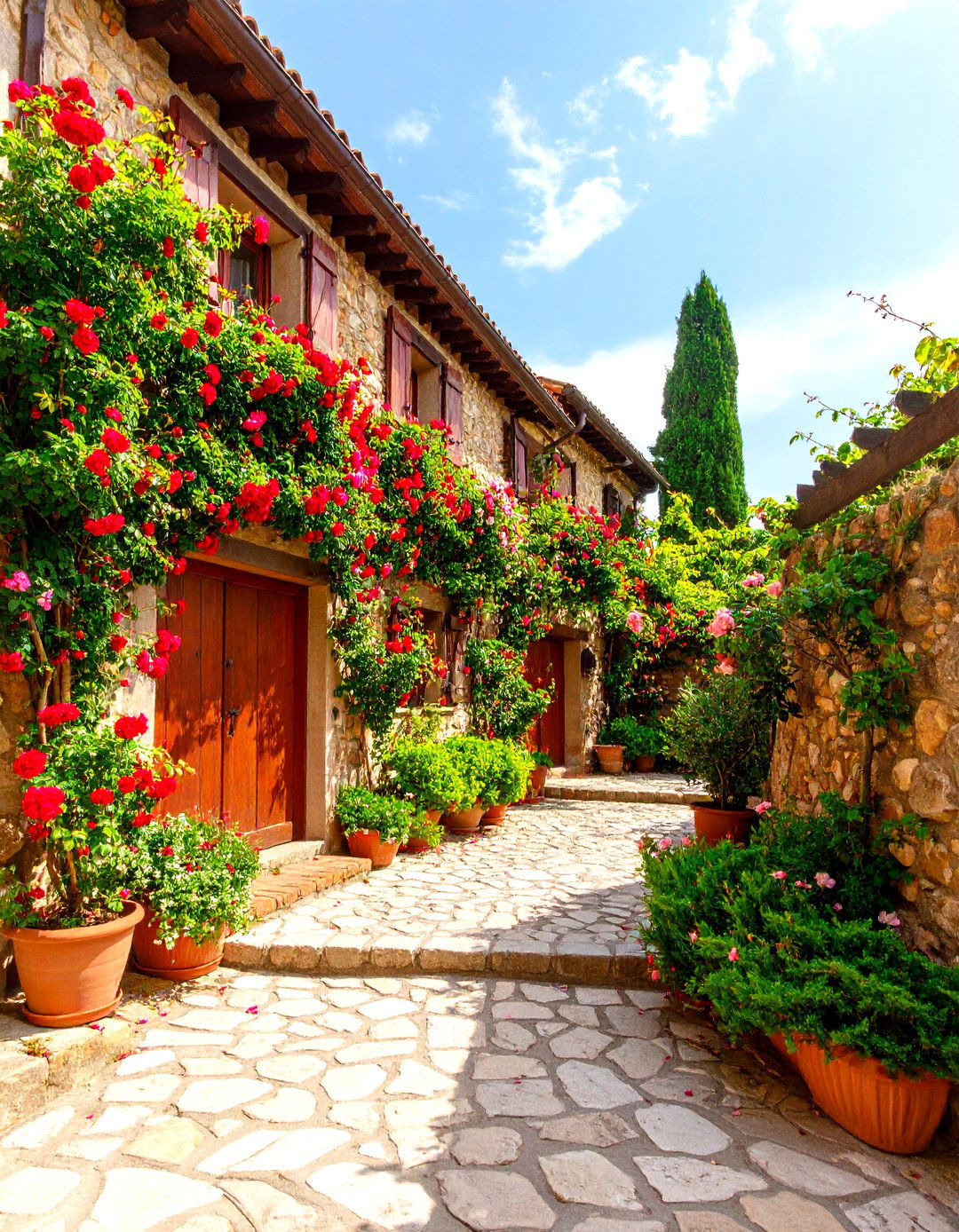
Design a sun-drenched Mediterranean rose garden that celebrates drought-tolerant beauty with warm-climate roses, aromatic herbs, and rustic materials. This style features climbing roses trained over pergolas and terraced stone walls, creating shaded seating areas perfect for enjoying morning coffee or evening wine. Incorporate heat-loving varieties like climbing bougainvillea alongside fragrant roses in peachy corals and sunset hues. Gravel pathways wind between raised beds constructed from local stone, filled with lavender, rosemary, and thyme that complement the roses' fragrances. Terra cotta containers showcase miniature roses and trailing varieties, while olive trees provide structural interest and authentic Mediterranean ambiance. Water features such as simple fountains add cooling elements while conserving moisture. This design thrives in hot, dry climates and requires minimal irrigation once established, making it both beautiful and environmentally sustainable.
4. Modern Minimalist Rose Garden

Create a sleek contemporary rose garden that emphasizes clean lines, architectural plants, and restrained color palettes for sophisticated urban landscapes. This modern approach features geometric raised beds constructed from cor-ten steel or concrete, planted with carefully selected rose varieties in monochromatic schemes. Single-color rose displays create dramatic impact while maintaining visual simplicity. Structural elements include linear pathways paved with large format tiles, minimal water features, and contemporary sculpture as focal points. Ornamental grasses and architectural perennials provide textural contrast without overwhelming the design. The planting scheme emphasizes form and foliage as much as flowers, incorporating roses with interesting growth habits and exceptional disease resistance. This style works perfectly for contemporary homes and requires precise maintenance to preserve the clean, uncluttered aesthetic. Choose landscape roses and groundcover varieties that maintain neat, predictable growth patterns throughout the seasons.
5. Climbing Rose Pergola Paradise
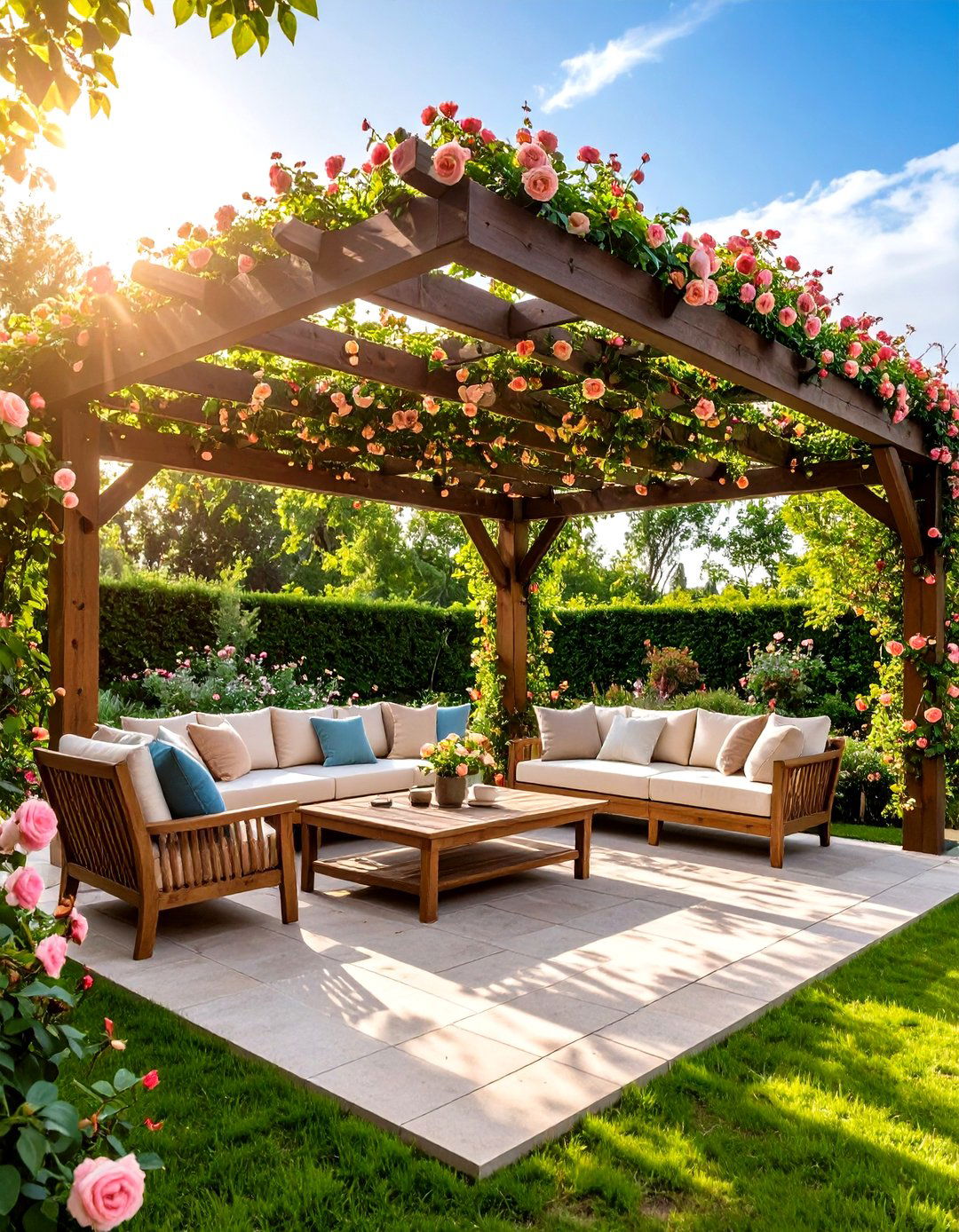
Transform ordinary pergolas into stunning floral canopies using vigorous climbing roses that create enchanting outdoor rooms filled with color and fragrance. This design focuses on selecting appropriate rose varieties for different pergola sizes and orientations, ensuring proper coverage without overwhelming the structure. Large-flowered climbers like 'Eden' and 'New Dawn' provide spectacular displays when trained horizontally along beams and posts. The key involves strategic placement of multiple rose varieties to extend blooming seasons and create color combinations that complement each other. Underneath the pergola, shade-tolerant plants such as hostas, ferns, and astilbe create lush groundcover that thrives in the filtered light. Incorporate comfortable seating areas where visitors can enjoy the roses' fragrance and watch wildlife attracted to the blooms. This design creates natural air conditioning during hot summer months while providing privacy screening and defining different garden areas through vertical growing.
6. Container Rose Garden Collection
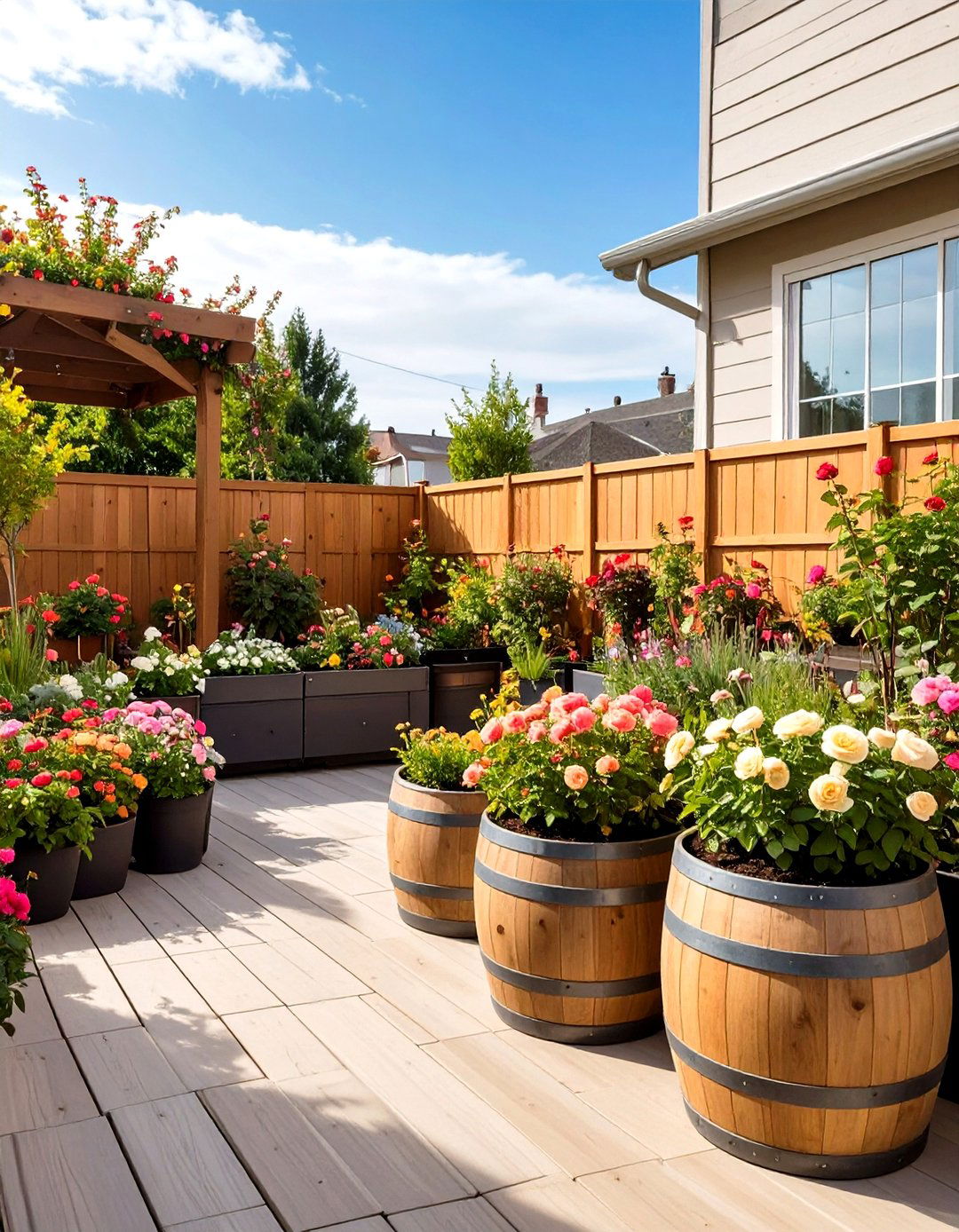
Develop a versatile container rose garden perfect for patios, balconies, and small spaces where traditional planting isn't possible. This portable approach utilizes large containers, half whiskey barrels, and raised planters to showcase diverse rose varieties in controlled growing environments. Mix different container sizes and heights to create visual interest while grouping complementary varieties together. Include miniature roses in smaller pots, shrub roses in medium containers, and climbing varieties in large planters with built-in trellises. The design emphasizes seasonal flexibility, allowing containers to be rearranged for optimal sun exposure or special occasions. Choose disease-resistant varieties bred specifically for container growing, and incorporate automatic drip irrigation systems for consistent moisture management. Companion plantings of herbs, annual flowers, and trailing plants soften container edges while providing additional color and texture. This approach works excellently for renters or gardeners who want to take their roses when relocating.
7. Moonlight Rose Garden Sanctuary
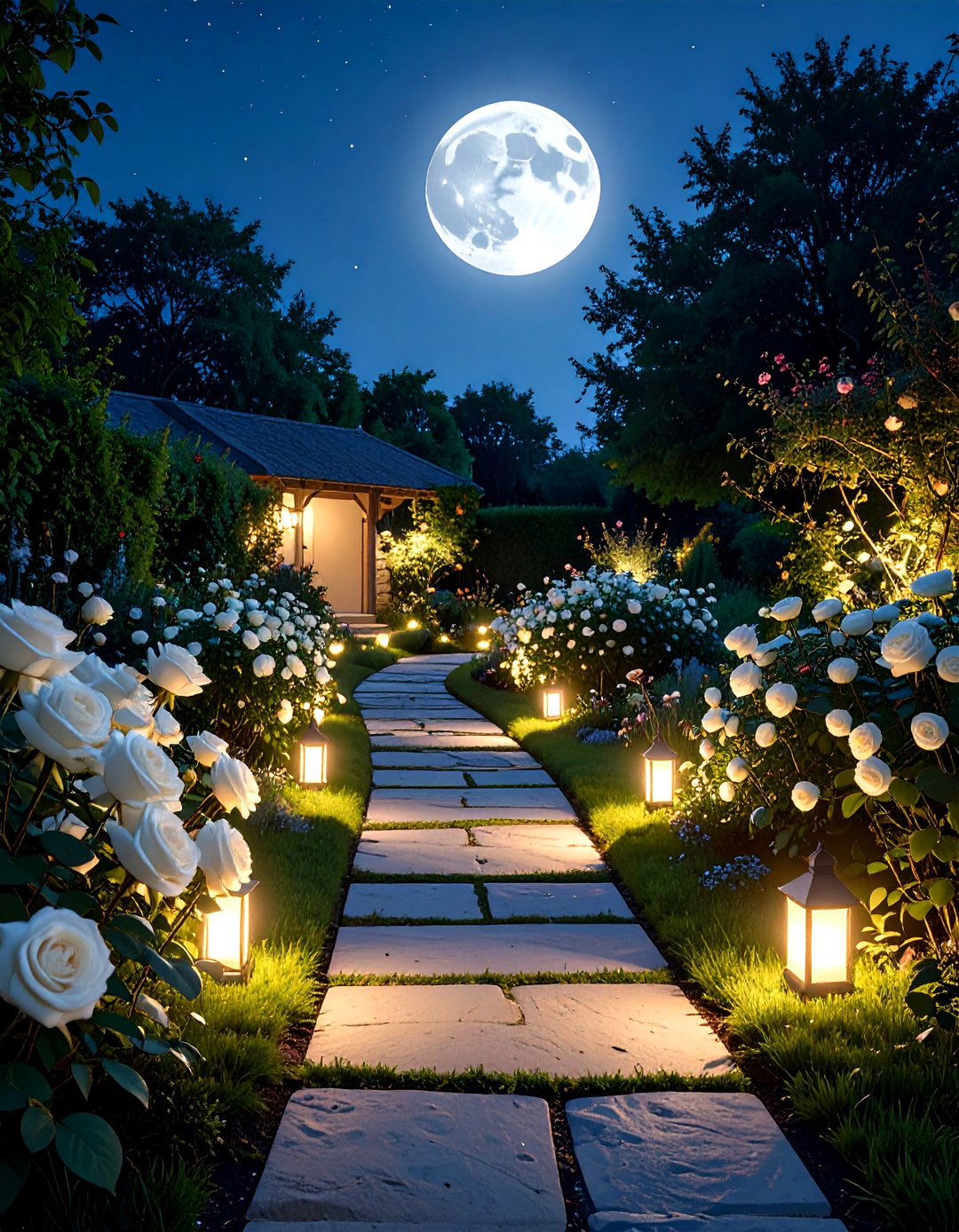
Design an ethereal white and cream rose garden that glows luminously in moonlight, creating a magical retreat for evening relaxation and contemplation. This enchanting theme features exclusively pale-colored roses including whites, creams, and soft yellows that reflect available light and appear to glow at dusk. Varieties like 'Iceberg,' 'Moonlight Romantica,' and 'White Eden' create stunning focal points throughout the space. Incorporate night-blooming jasmine, white clematis, and silver-foliaged plants such as lamb's ear and artemisia to enhance the ethereal effect. Strategic lighting highlights key specimens without overwhelming the natural moonlight ambiance. White gravel paths and pale stone seating areas complement the monochromatic planting scheme. This garden style provides a serene escape from daily stress while supporting nocturnal pollinators with fragrant blooms that open in evening hours. The overall effect creates a romantic, almost mystical atmosphere perfect for quiet contemplation.
8. Heritage Rose Conservation Garden

Celebrate rose history by creating a heritage rose garden featuring antique varieties, old garden roses, and species roses that preserve genetic diversity and cultural heritage. This educational design showcases roses arranged chronologically or by breeding groups, with clear labeling indicating origins, breeding dates, and historical significance. Include damask roses, gallicas, albas, and other old European types alongside modern recreations of historical varieties. Traditional garden structures such as wooden arbors, vintage gates, and period-appropriate seating enhance the historical atmosphere. Companion plants reflect historical gardening practices, incorporating period herbs, heirloom vegetables, and flowers that would have grown alongside roses in centuries past. This approach supports conservation efforts while providing visitors with opportunities to experience roses as they appeared in grandmother's gardens. Many heritage varieties offer exceptional fragrance and unique flower forms no longer found in modern hybrids, creating truly distinctive garden experiences.
9. Fragrant Rose Sensory Garden
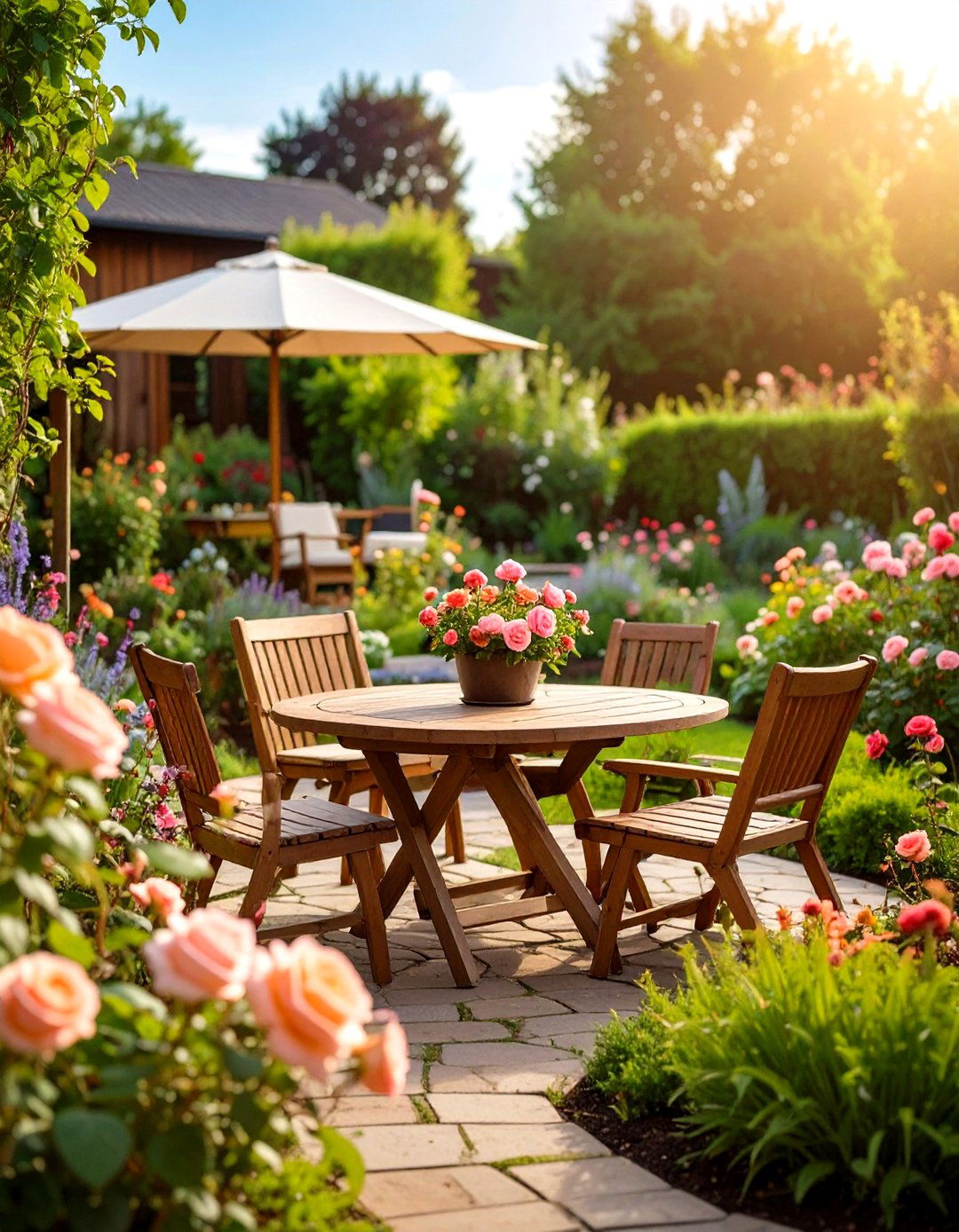
Create an intensely aromatic rose garden designed specifically to showcase the diverse fragrances that different rose varieties offer throughout the growing season. This sensory-focused design positions the most fragrant roses near seating areas, pathways, and entry points where visitors can easily appreciate their perfumes. Group roses by fragrance types, from fruity and tea-scented to spicy and musky, allowing comparisons between different aromatic profiles. Include roses with exceptional fragrance ratings such as 'Mister Lincoln,' 'Double Delight,' and 'Fragrant Cloud' alongside newer highly scented varieties. Raised beds bring flowers closer to nose level while curved pathways encourage slow movement through the garden. Incorporate herbs like lavender, rosemary, and mint that complement rose fragrances without competing. Wind barriers protect delicate scents while strategic plantings create microclimates that concentrate aromatic molecules. This design particularly benefits visually impaired visitors while providing therapeutic aromatherapy experiences for all garden users.
10. Cutting Rose Garden Studio

Establish a dedicated cutting rose garden designed specifically for harvesting blooms for indoor arrangements and special occasions throughout the growing season. This practical design emphasizes high-production varieties known for excellent vase life, strong stems, and prolific blooming habits. Organize roses in straight rows with wide pathways for easy access and maintenance, similar to commercial cut flower operations but scaled for home use. Include varieties that bloom at different times to ensure continuous harvesting opportunities from spring through fall. Essential infrastructure includes convenient water sources, tool storage, and work surfaces for immediate conditioning of cut stems. Companion plantings provide filler flowers, foliage, and textural elements for complete arrangements. Choose roses specifically bred for cutting such as 'Oklahoma,' 'Chrysler Imperial,' and 'Garden Party' alongside newer varieties with exceptional post-harvest performance. This functional approach transforms rose gardening into a creative hobby that provides fresh flowers for home decoration and gift-giving throughout the year.
11. Wildlife-Friendly Rose Garden Ecosystem

Design an ecological rose garden that supports local wildlife while providing beautiful flowers through careful selection of single-flowered varieties and native companion plants. This environmentally conscious approach emphasizes roses with visible stamens that provide pollen and nectar for bees, butterflies, and beneficial insects. Include species roses and modern varieties bred for wildlife value rather than complex double flowers that offer little nectar. Allow some roses to develop hips for autumn bird food while incorporating native plants that support complete ecosystem food webs. Design elements include shallow water features for drinking and bathing, brush piles for nesting sites, and pesticide-free maintenance practices. Avoid deadheading all blooms to allow seed development and provide natural food sources. This approach creates a dynamic garden that changes seasonally as different wildlife species utilize available resources. The resulting garden provides educational opportunities while supporting local biodiversity and demonstrating sustainable gardening practices that benefit both gardens and environmental health.
12. Terraced Hillside Rose Garden
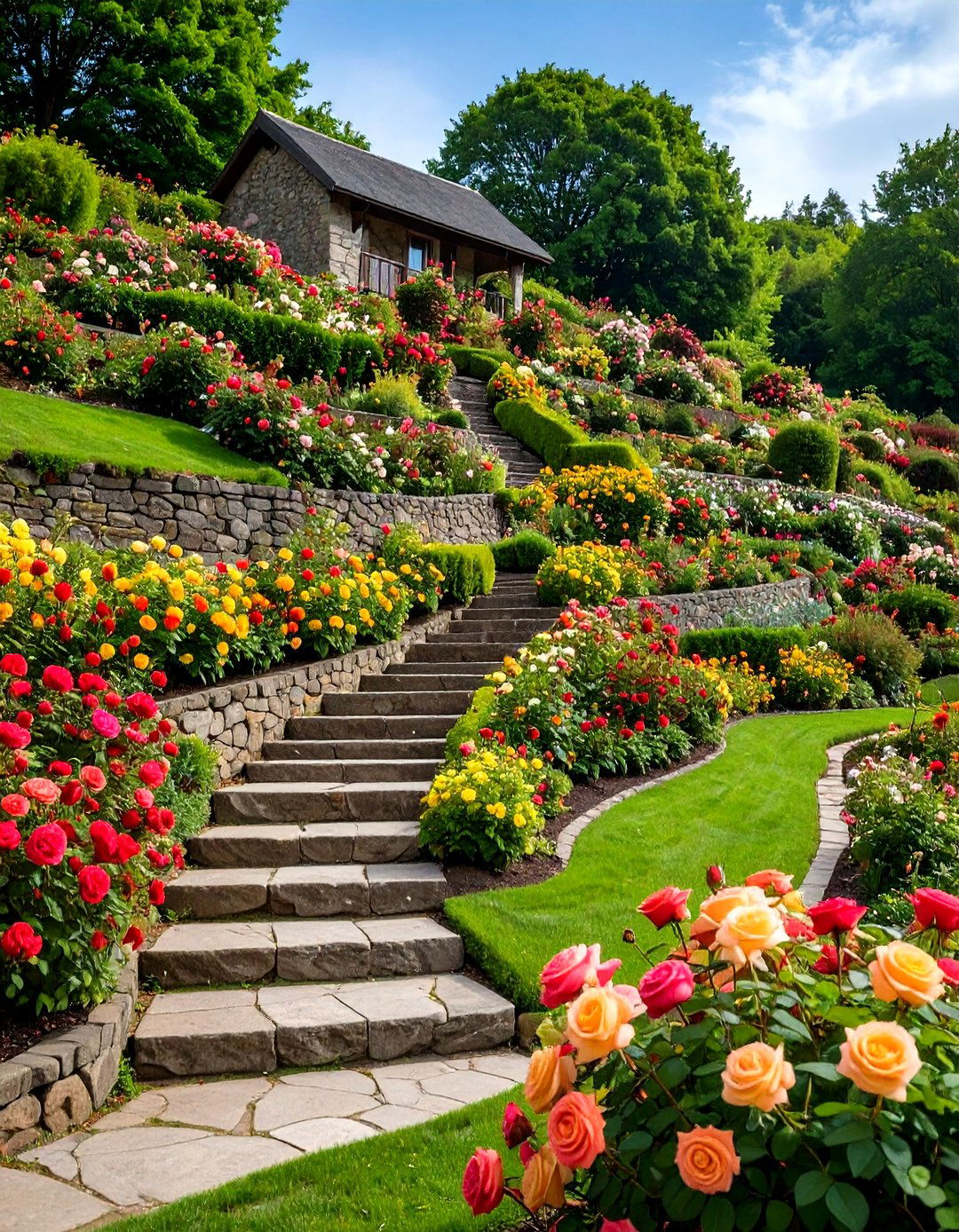
Transform sloped terrain into a spectacular terraced rose garden using retaining walls, strategic grading, and erosion-control plantings that maximize growing space while preventing soil loss. This dramatic design creates multiple planting levels that showcase different rose types according to their growth habits and maintenance needs. Upper terraces feature climbing roses and large shrub varieties that can cascade over walls, while lower levels accommodate hybrid teas and floribundas requiring more intensive care. Stone or timber retaining walls provide structural support while creating planting pockets with improved drainage. Incorporate groundcover roses on steep slopes between terraces to prevent erosion while providing continuous color. Switchback pathways allow safe access throughout the garden while creating opportunities to view roses from different perspectives. Water management becomes crucial, with each terrace requiring proper drainage while capturing runoff for irrigation. This approach maximizes planting space in challenging terrain while creating a visually stunning garden that appears much larger than flat alternatives.
13. Four-Season Rose Garden Display
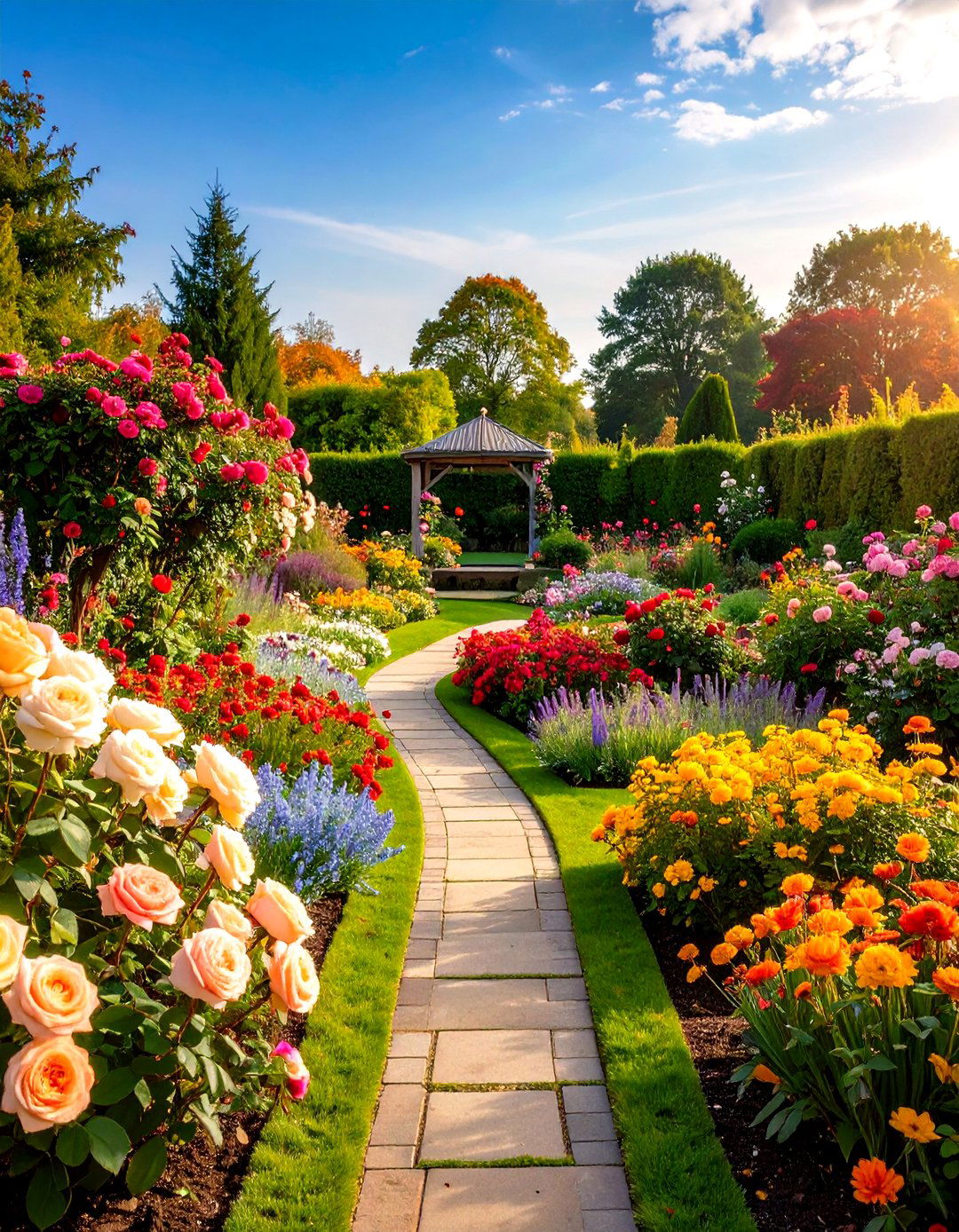
Create a rose garden designed to provide year-round interest through careful selection of varieties with extended blooming periods, attractive foliage, and winter structure. This comprehensive approach combines repeat-blooming roses with plants that offer spring bulbs, summer flowers, autumn color, and winter form. Include roses that develop colorful hips such as rugosas and species roses for fall and winter interest. Companion plantings provide seasonal succession with spring-flowering bulbs, summer perennials, autumn-colored shrubs, and evergreen structure plants. Design elements such as attractive hardscaping, sculpture, and architectural plants maintain visual interest during dormant periods. Choose roses with disease-resistant foliage that remains attractive throughout the growing season rather than varieties prone to defoliation. This sustainable approach reduces maintenance while providing educational opportunities about seasonal garden cycles. The resulting garden demonstrates how thoughtful planning creates landscapes that remain engaging throughout the year rather than providing interest only during peak blooming periods. Strategic plant placement ensures something attractive draws attention during every season.
14. Rose Garden Room Collection
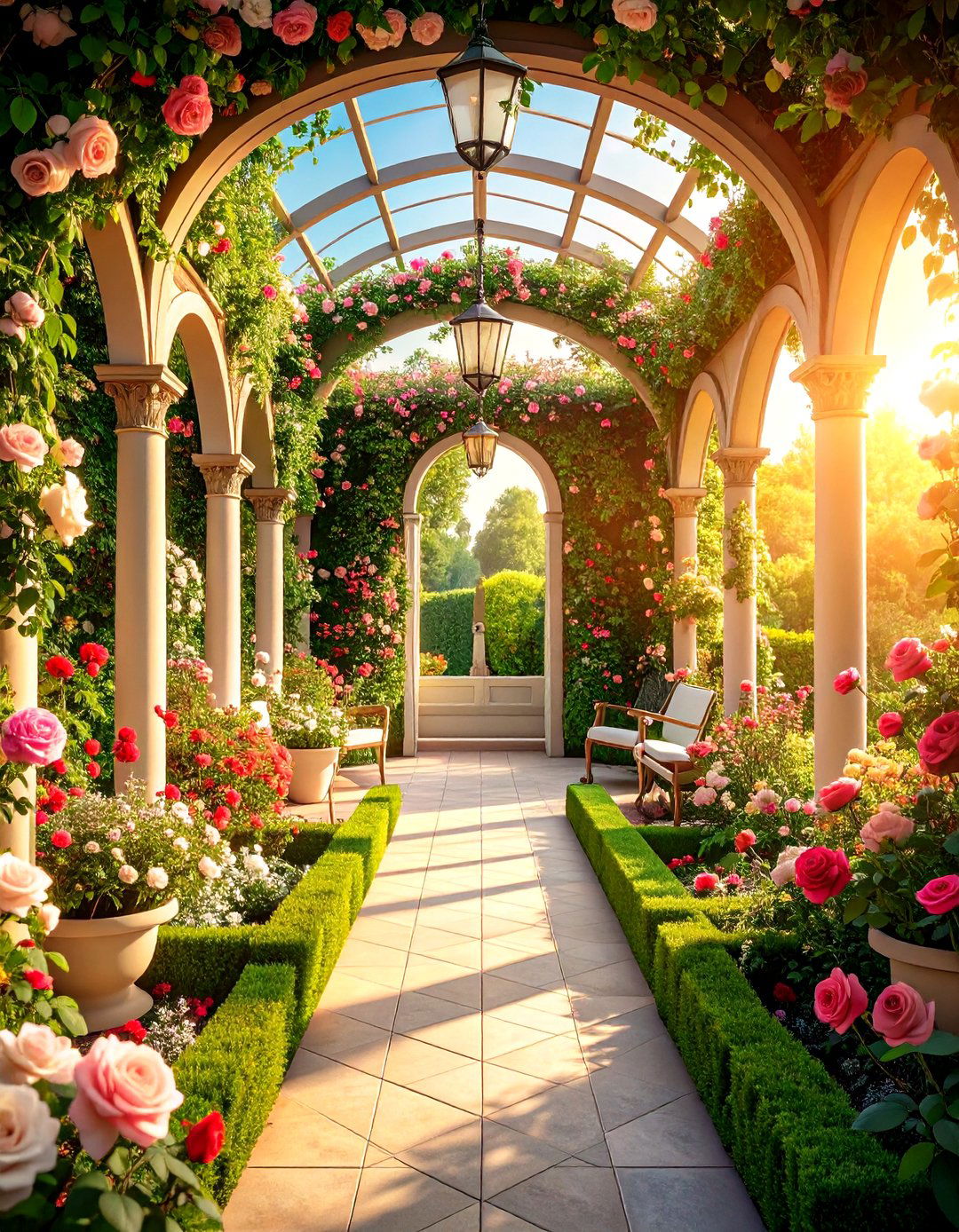
Design an expansive rose garden divided into distinct themed "rooms" that showcase different rose types, colors, or companion plant combinations within a cohesive overall framework. This ambitious approach uses hedges, pathways, and architectural elements to create separate garden spaces while maintaining visual connections between areas. Individual rooms might focus on specific themes such as red roses with herbs, climbing roses with clematis, or miniature roses with alpine plants. Transitional elements including gateways, arbors, and vista lines connect rooms while preserving their individual character. Each room features appropriate seating, focal points, and maintenance access while contributing to the garden's overall narrative. This design approach works particularly well for larger properties where different family members can adopt individual rooms according to their interests. The room concept allows experimentation with different design styles while providing organizational structure for plant collections. Seasonal progression becomes more dramatic as visitors move between rooms experiencing different combinations of colors, fragrances, and flowering times.
15. Drought-Tolerant Rose Garden Landscape
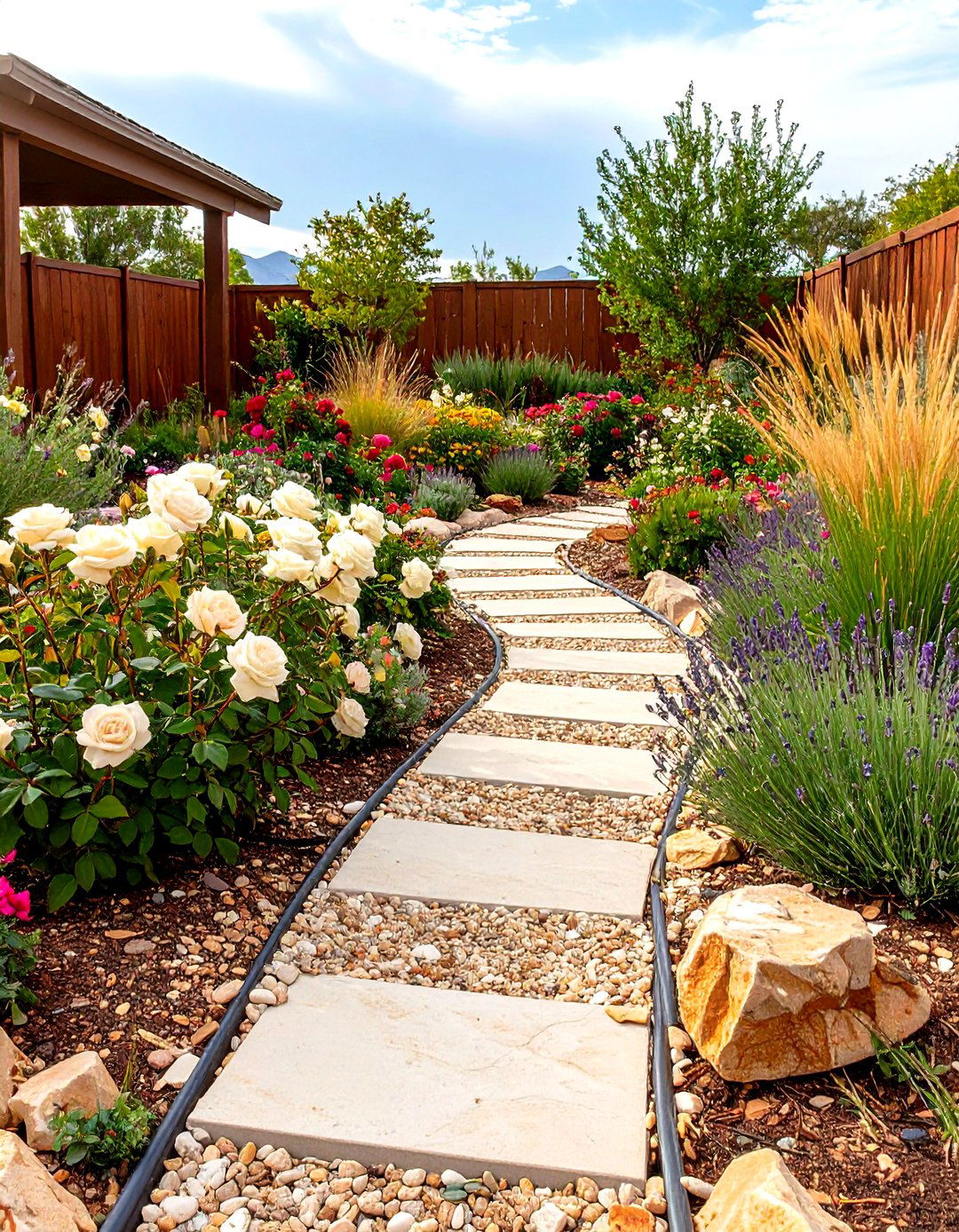
Develop a water-wise rose garden featuring drought-tolerant varieties, efficient irrigation systems, and companion plants adapted to low-water conditions. This sustainable approach emphasizes roses bred for hot, dry climates while incorporating xeriscaping principles that reduce overall water consumption. Select modern shrub roses, groundcover varieties, and species roses known for drought tolerance once established. Companion plantings include Mediterranean herbs, ornamental grasses, and succulents that thrive in similar conditions. Design elements such as mulched pathways, gravel areas, and strategic shade structures reduce water evaporation while creating attractive hardscaping. Drip irrigation systems deliver water directly to root zones while rain harvesting systems capture precipitation for extended use. This approach demonstrates how beautiful rose gardens can thrive in water-limited environments while supporting environmental sustainability goals. The resulting landscape requires minimal irrigation while providing habitat for drought-adapted wildlife and serving as a model for climate-appropriate gardening practices in arid regions.
16. Vintage Rose Garden Marketplace
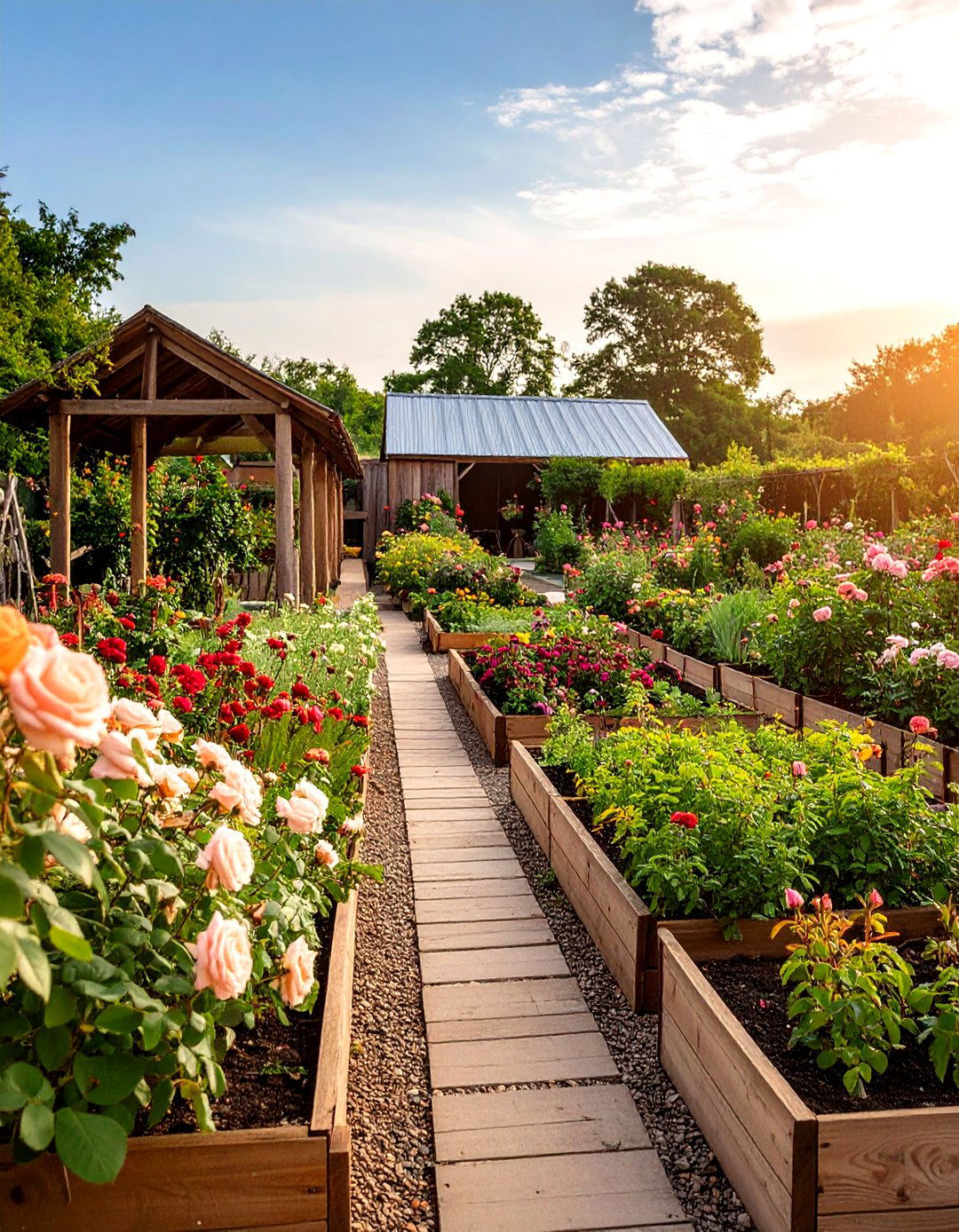
Create a charming rose garden inspired by old-world market gardens where roses grow alongside vegetables, herbs, and cutting flowers in practical yet beautiful combinations. This productive design integrates edible plants with ornamental roses, creating landscapes that provide food, flowers, and beauty throughout the growing season. Raised beds constructed from reclaimed materials organize different plant types while maintaining cottage garden informality. Include climbing roses trained over vegetable supports, rose hips for preserves, and herb companions that enhance both garden health and culinary possibilities. Traditional elements such as woven willow edging, vintage tools as decoration, and weathered signs enhance the market garden atmosphere. This approach demonstrates historical gardening practices where beauty and productivity coexisted naturally. The design emphasizes heirloom varieties of both roses and vegetables that connect contemporary gardeners with traditional practices. Seasonal succession planning ensures continuous harvests while maintaining visual appeal throughout the growing period, creating gardens that serve multiple purposes efficiently.
17. Rose Garden Privacy Hedge Boundary
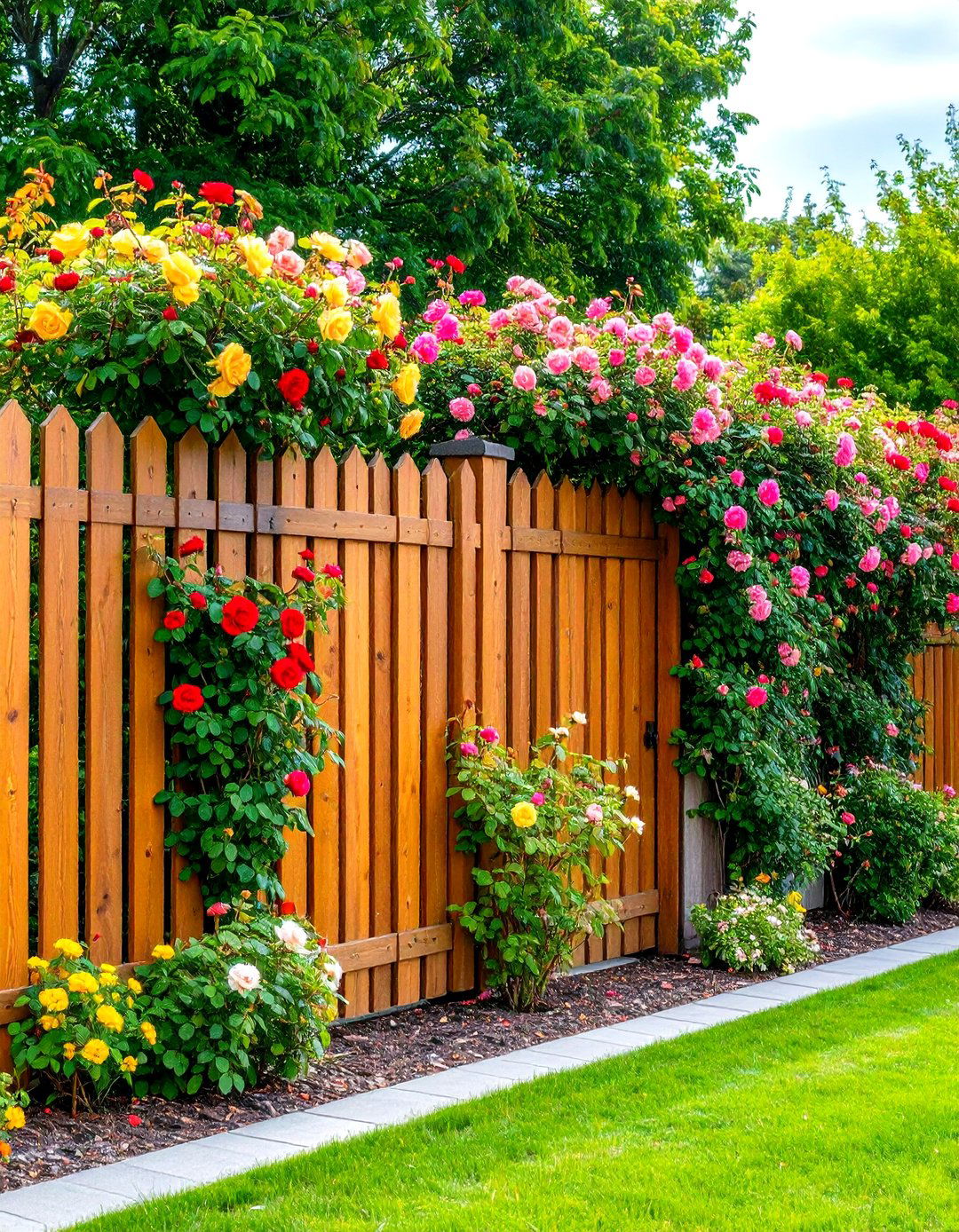
Design a living privacy screen using roses as hedging plants that provide seasonal color, fragrance, and natural barriers while requiring minimal maintenance once established. This functional approach utilizes dense-growing shrub roses, rugosas, and landscape varieties that form effective screens without requiring constant pruning. Plant spacing creates solid coverage while allowing air circulation that prevents disease problems common in dense plantings. Choose varieties with different blooming periods to extend seasonal interest while incorporating roses that develop attractive hips for autumn and winter appeal. The hedge design accommodates different height requirements, from low borders marking property lines to tall screens blocking unwanted views. Incorporate gates, openings, and varying heights to prevent monotony while maintaining the hedge's primary function. This approach provides wildlife habitat while offering more interesting alternatives to traditional evergreen hedging. Maintenance requirements remain minimal compared to formal hedges while providing seasonal beauty that changes throughout the year. The resulting boundary becomes a garden feature rather than simply a functional barrier.
18. Miniature Rose Garden Wonderland

Create an enchanting small-scale rose garden featuring miniature and patio roses that provide full-sized beauty in compact spaces perfect for close viewing and detailed appreciation. This intimate design emphasizes the intricate beauty of small roses through careful placement in raised beds, containers, and rock garden settings that bring flowers to eye level. Include true miniatures under 18 inches tall alongside patio roses up to 3 feet for varied heights and textures. Design elements such as small pathways, tiny seating areas, and detailed hardscaping create fairy-tale atmospheres that invite close inspection. Companion plantings include small bulbs, alpine plants, and fine-textured perennials that complement rather than overwhelm the delicate rose scale. This approach works excellently for elderly gardeners or those with mobility limitations who benefit from easily accessible plants. Container groupings allow seasonal rearrangement while providing opportunities to showcase special varieties. The resulting garden provides intense color and fragrance in minimal space while demonstrating how dramatic impacts can be achieved through attention to scale and proportion.
19. Rose Garden Arbor Walkway

Design a romantic covered walkway featuring multiple connected arbors draped with climbing roses that create a tunnel-like passage filled with flowers and fragrance. This dramatic approach links different garden areas while providing spectacular overhead displays during peak blooming periods. Space arbors appropriately to ensure healthy air circulation while maintaining coverage density needed for visual impact. Choose vigorous climbing varieties with different bloom times to extend seasonal interest while avoiding overcrowding that promotes disease. Include rambling roses that drape naturally alongside more structured climbers that require training and support. The walkway design incorporates resting areas with benches where visitors can pause and appreciate the overhead display while enjoying rose fragrances. Underlying plantings create attractive groundcover that thrives in filtered light conditions created by the rose canopy. This approach provides natural cooling during hot weather while creating one of the most memorable rose garden experiences possible. Strategic maintenance ensures the walkway remains passable while preserving the romantic overhead effect that makes this design so appealing.
20. Rose Garden Color Wave Border
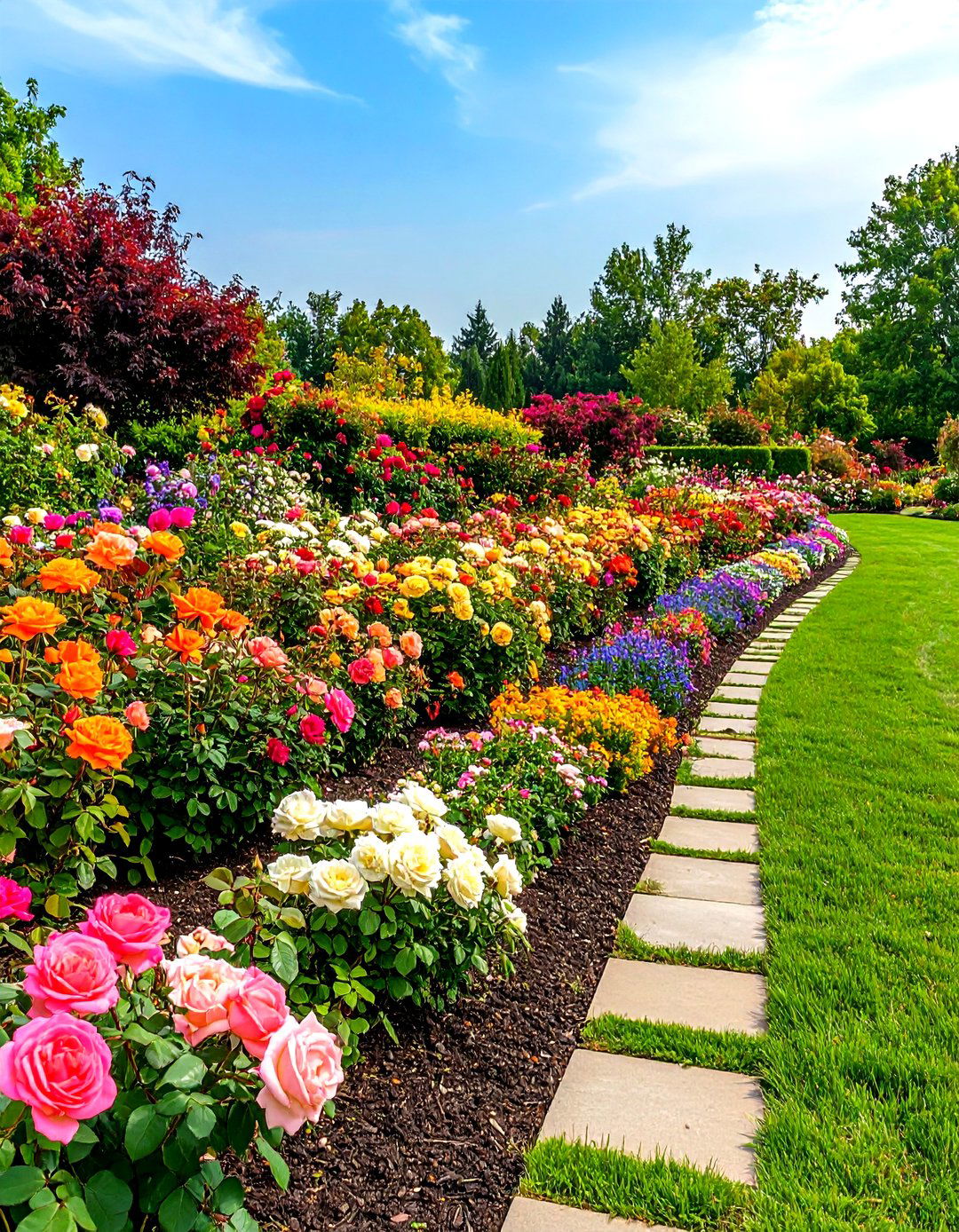
Create a spectacular perennial border featuring roses as the backbone plants surrounded by carefully orchestrated companion plants that provide continuous color waves throughout the growing season. This sophisticated design approach treats roses as anchor plants while building layered plantings that ensure something spectacular always draws attention. Organize plantings by blooming sequence, starting with spring bulbs and early perennials, progressing through peak summer rose displays, and concluding with autumn flowers and foliage. Color combinations shift seasonally while maintaining harmonious relationships between roses and their companions. Include plants with different heights, textures, and blooming periods to create dynamic compositions that change weekly throughout the growing season. This approach maximizes garden impact while ensuring efficient use of space through careful plant selection and placement. The resulting border provides months of continuous interest while demonstrating advanced companion planting techniques that support garden health through beneficial plant relationships and integrated pest management strategies.
Conclusion:
These diverse rose garden ideas demonstrate the remarkable versatility of roses in contemporary landscape design. From formal parterre gardens to wild cottage plantings, each approach offers unique opportunities to create outdoor spaces that reflect personal style while providing seasonal beauty. Whether you choose sustainable drought-tolerant designs or intensive cutting gardens, success depends on selecting appropriate varieties for your climate and maintenance preferences. The current trend toward wildlife-friendly and environmentally conscious gardening makes roses more relevant than ever, as these timeless plants support pollinators while providing unmatched beauty and fragrance. By incorporating elements from several design themes, you can create a personalized rose garden that evolves with your interests and provides years of gardening satisfaction.



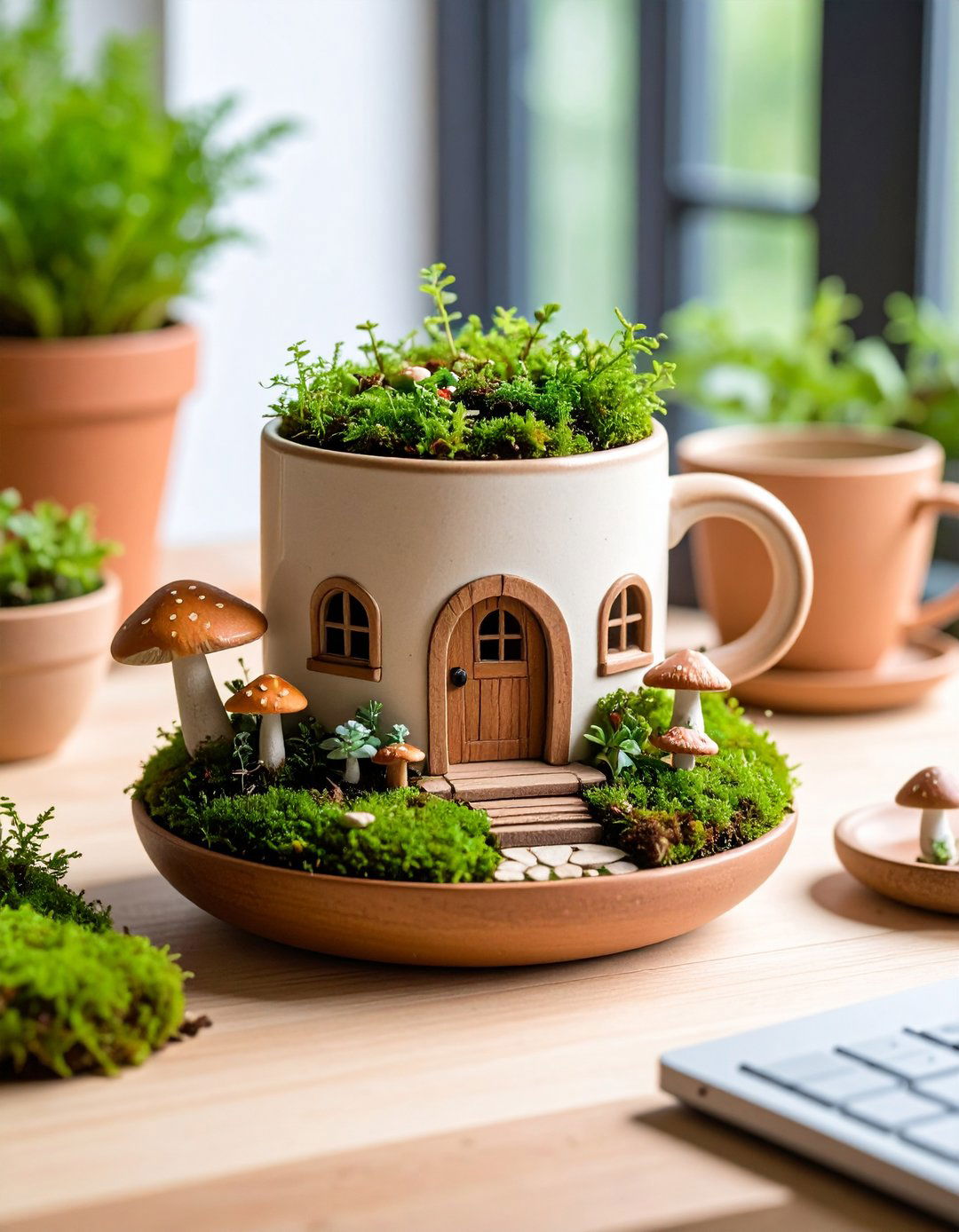
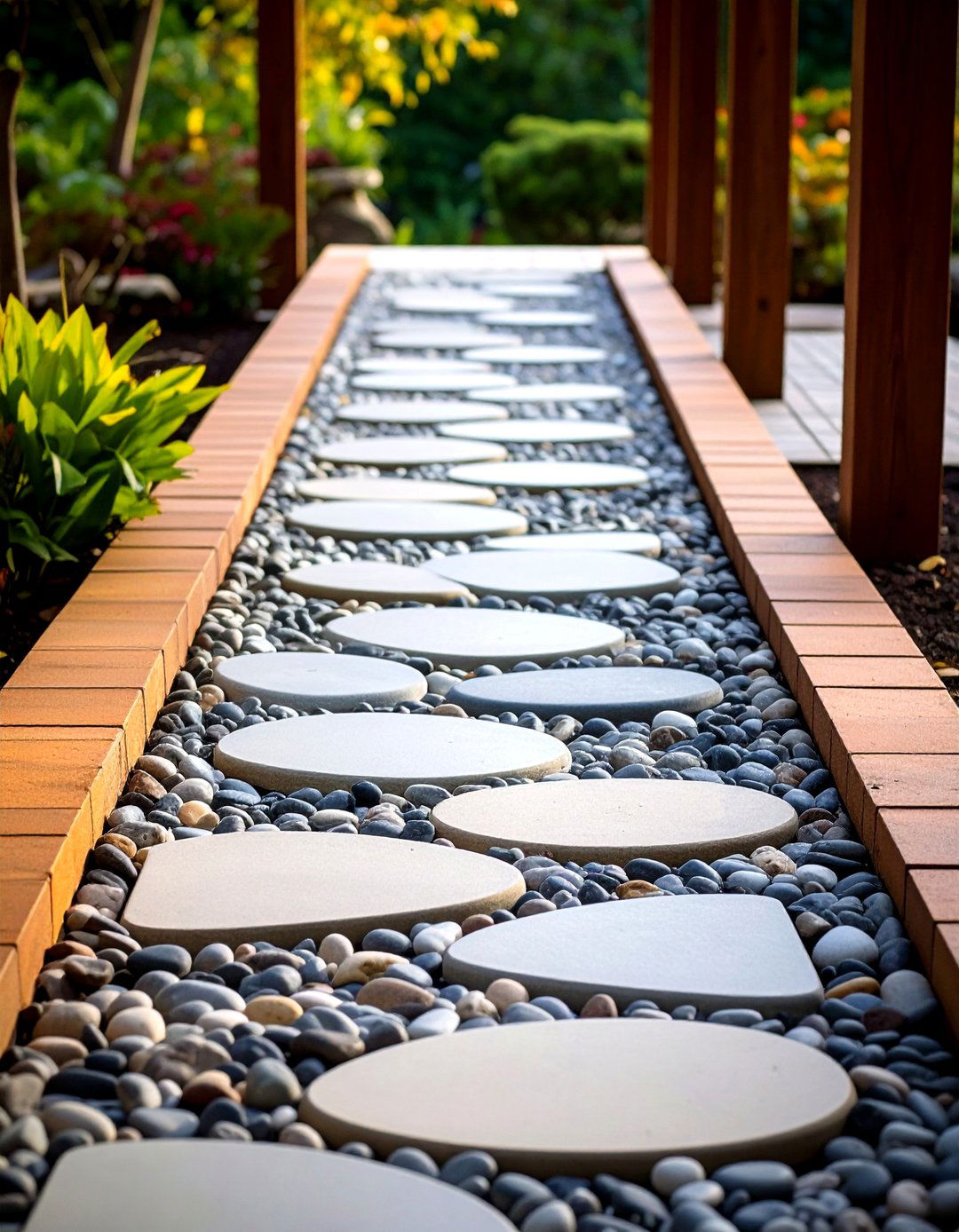
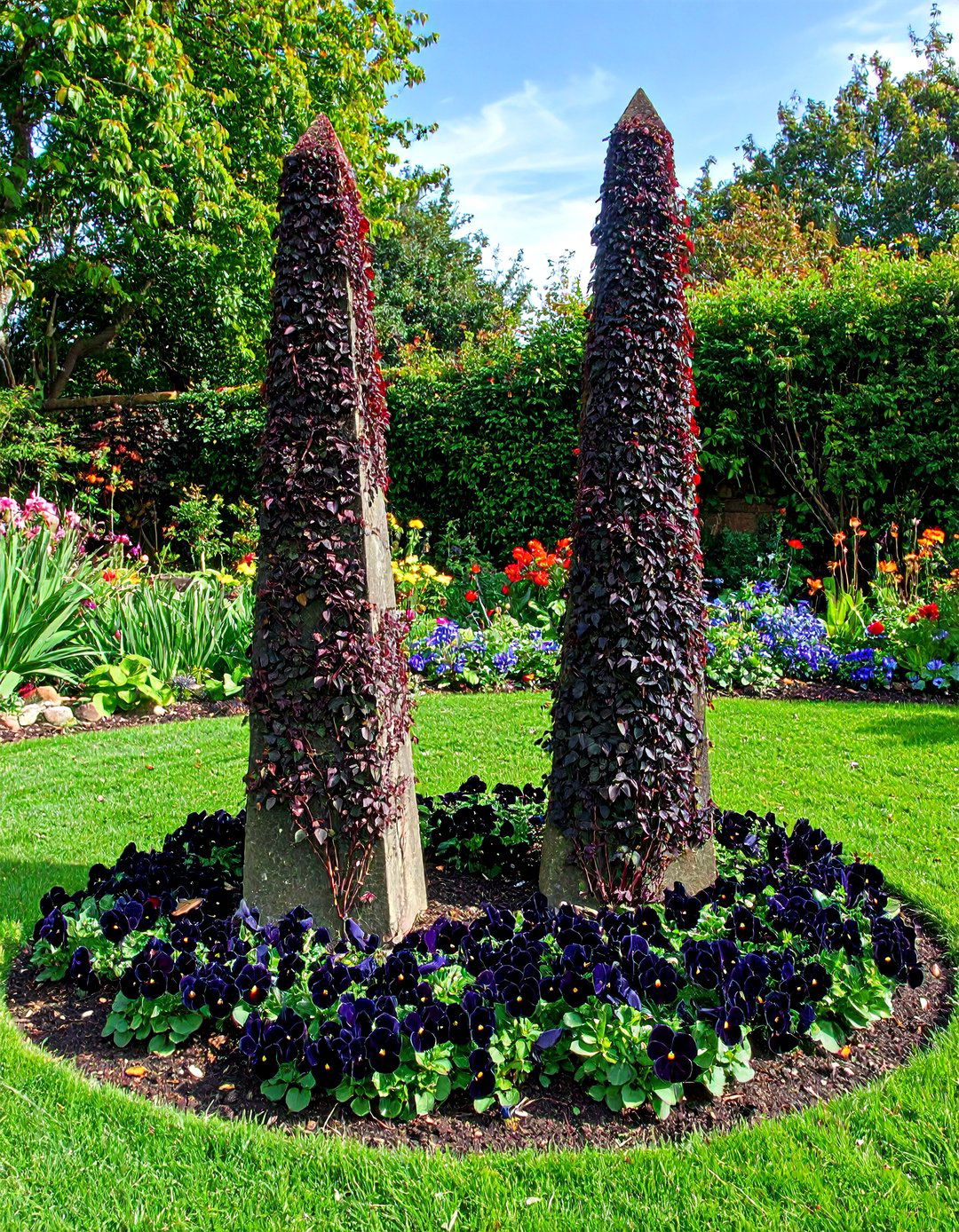
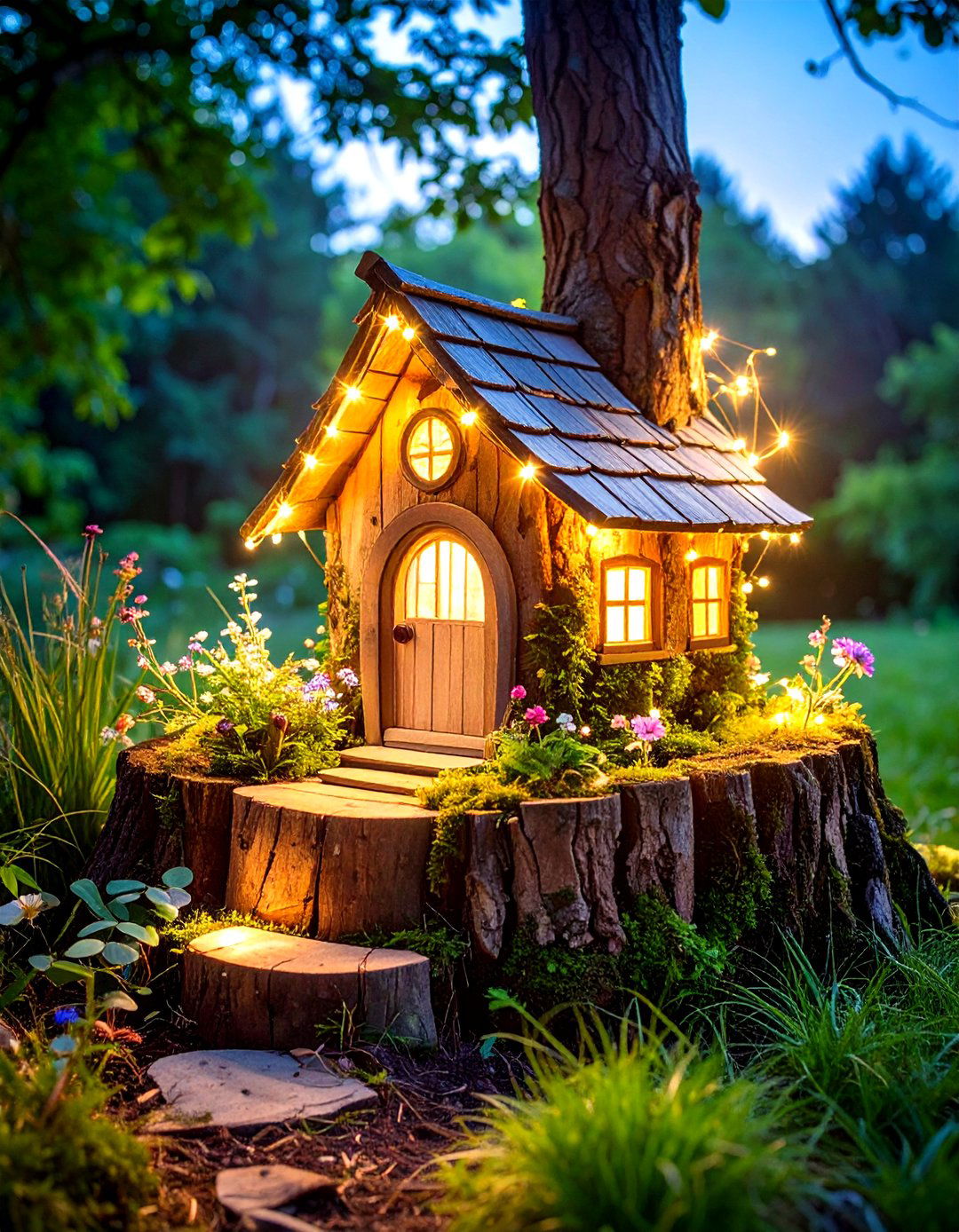
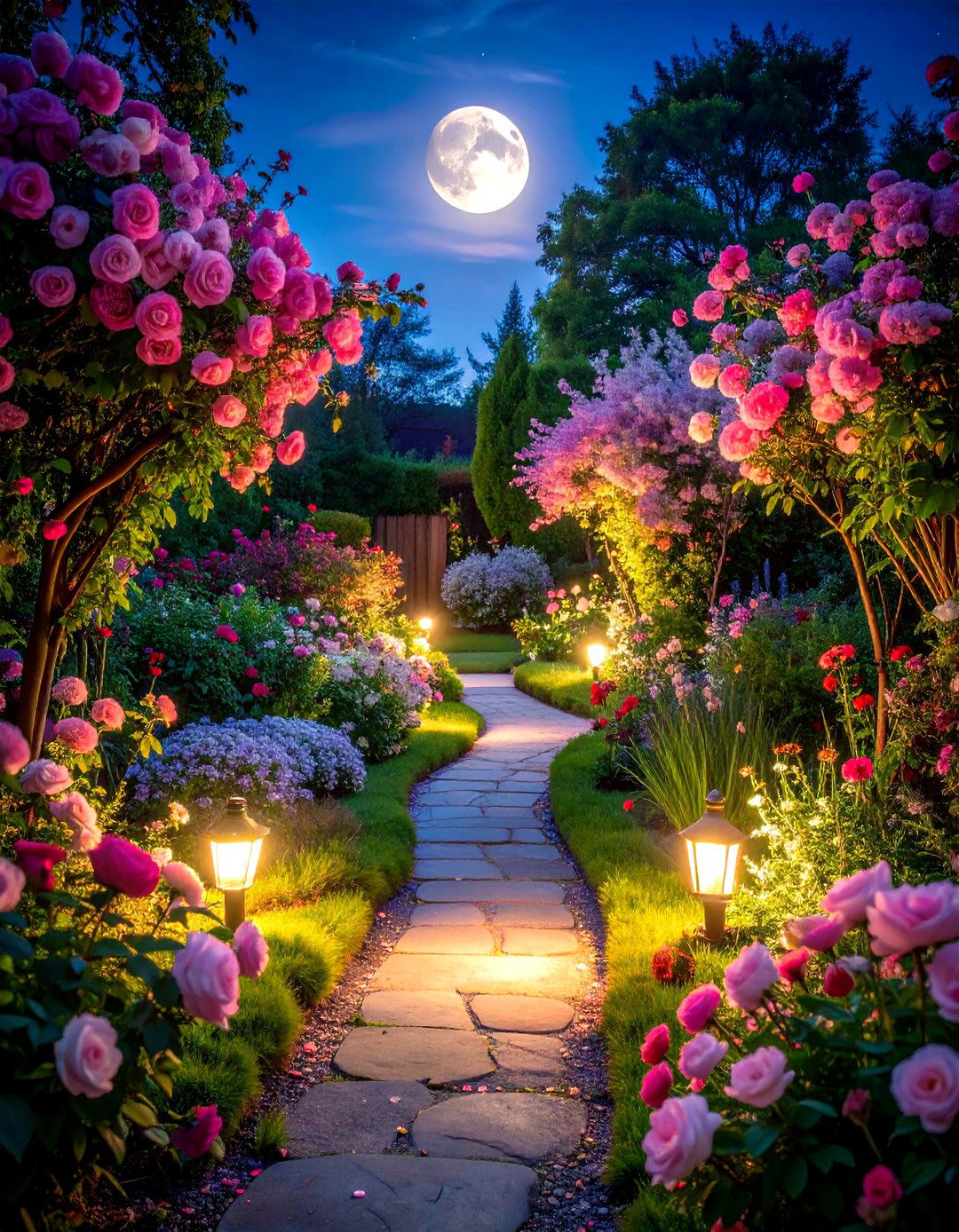
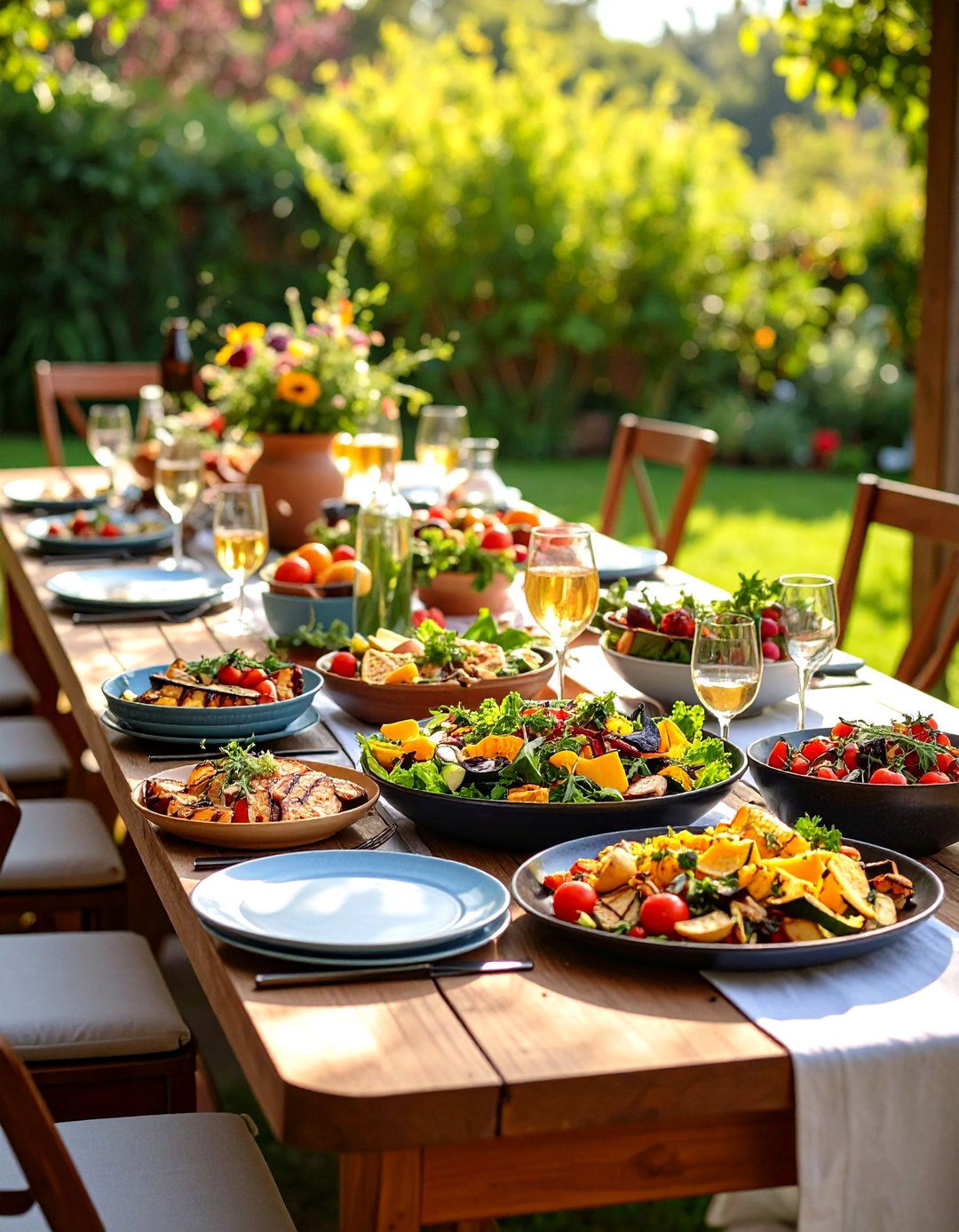
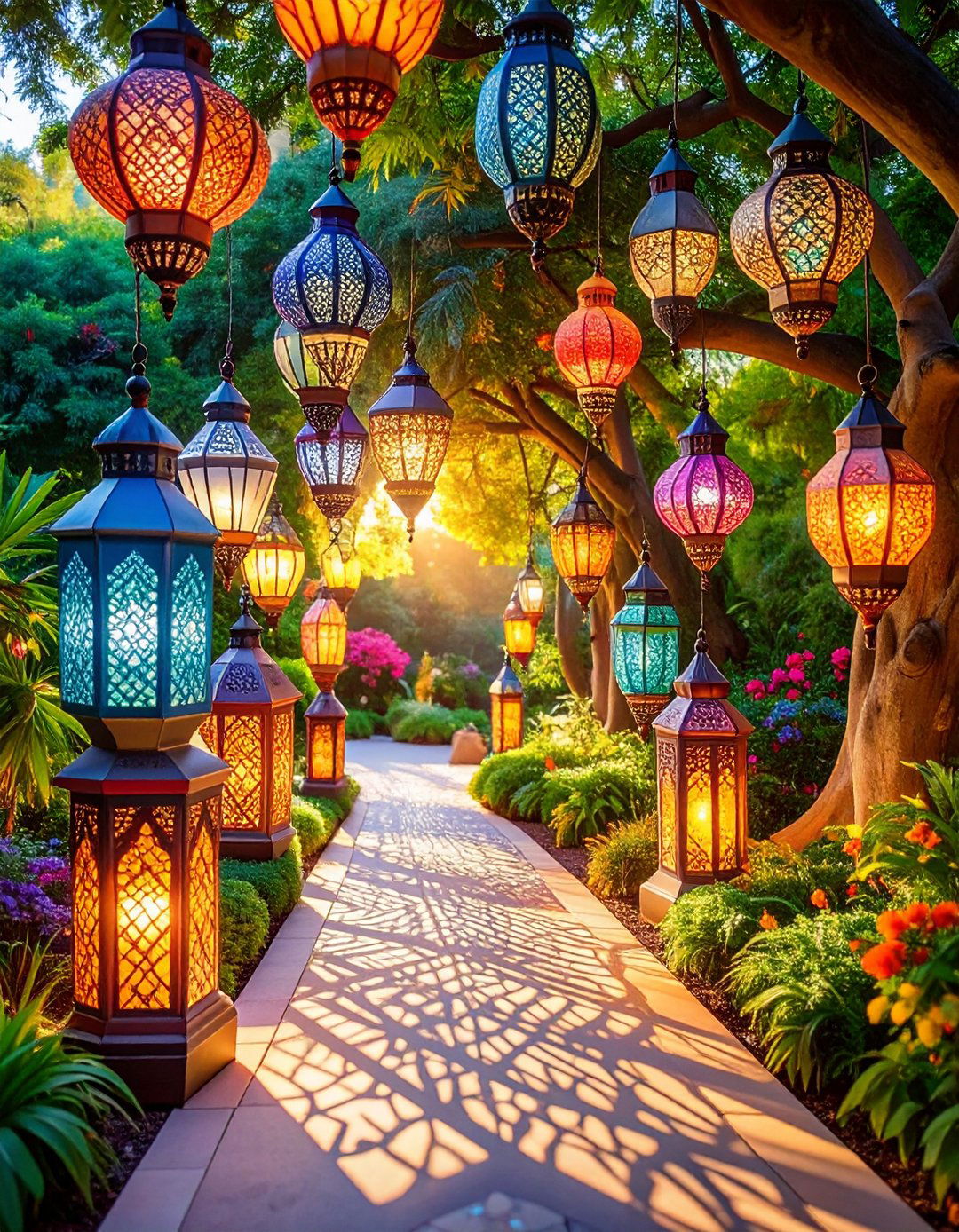


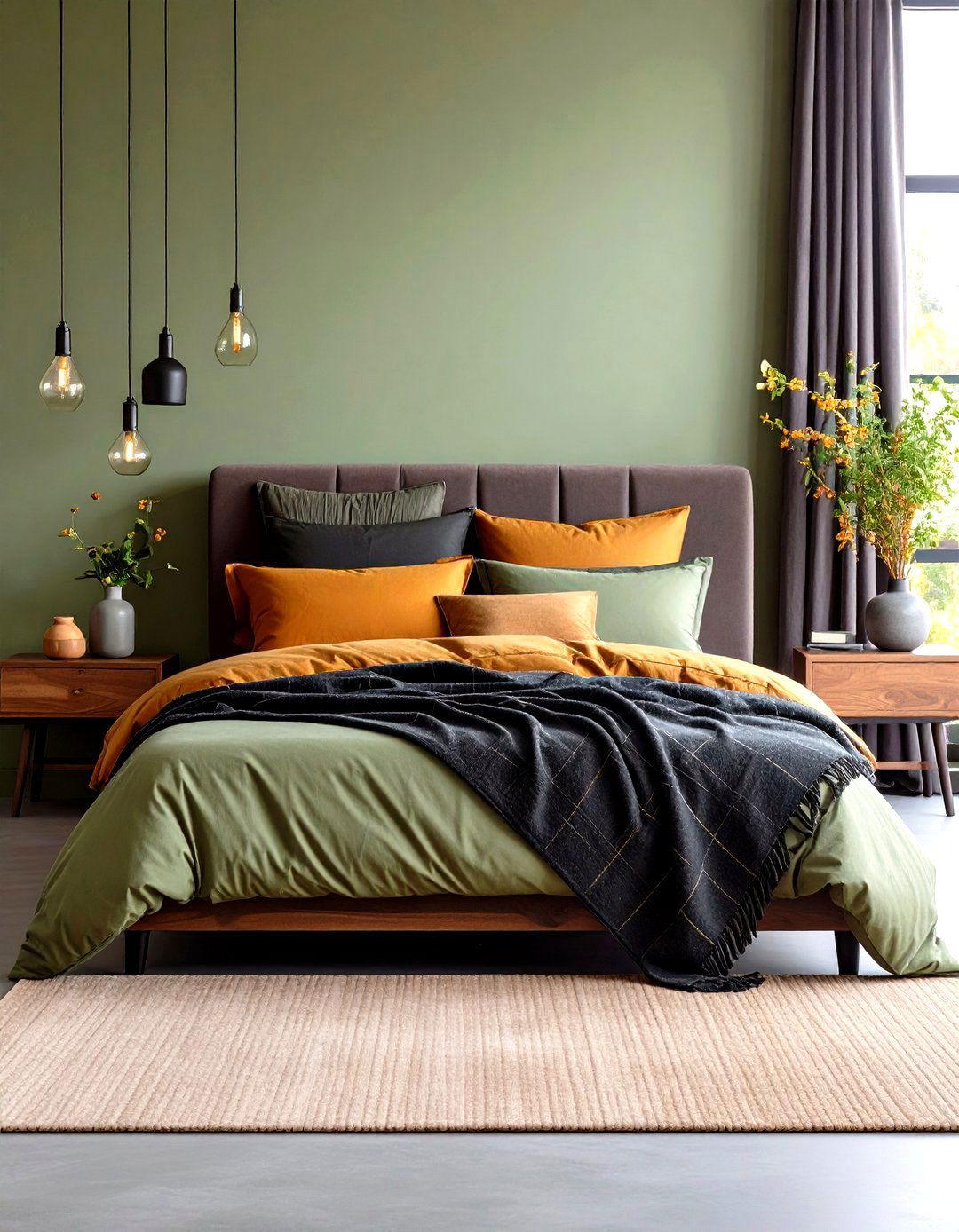
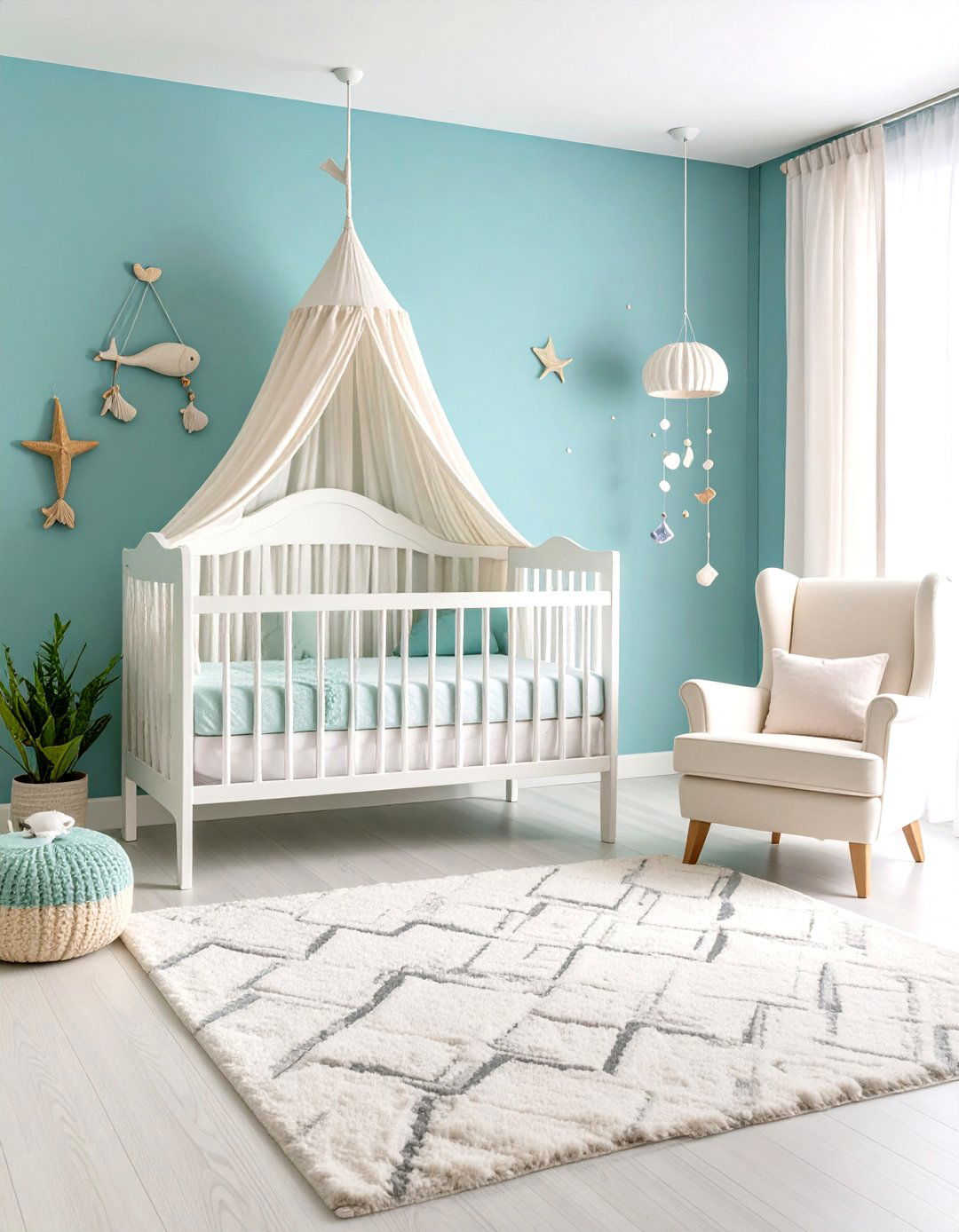
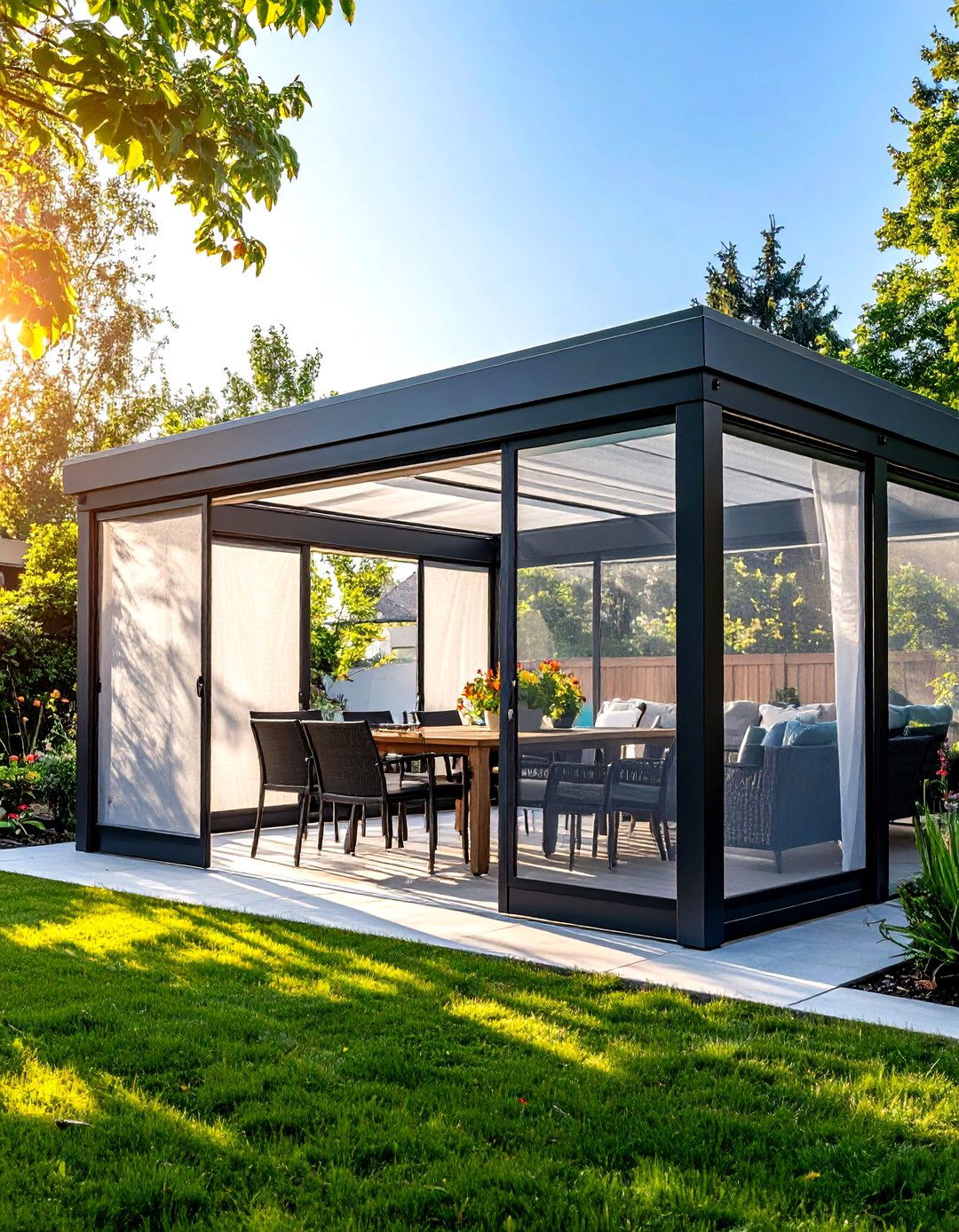
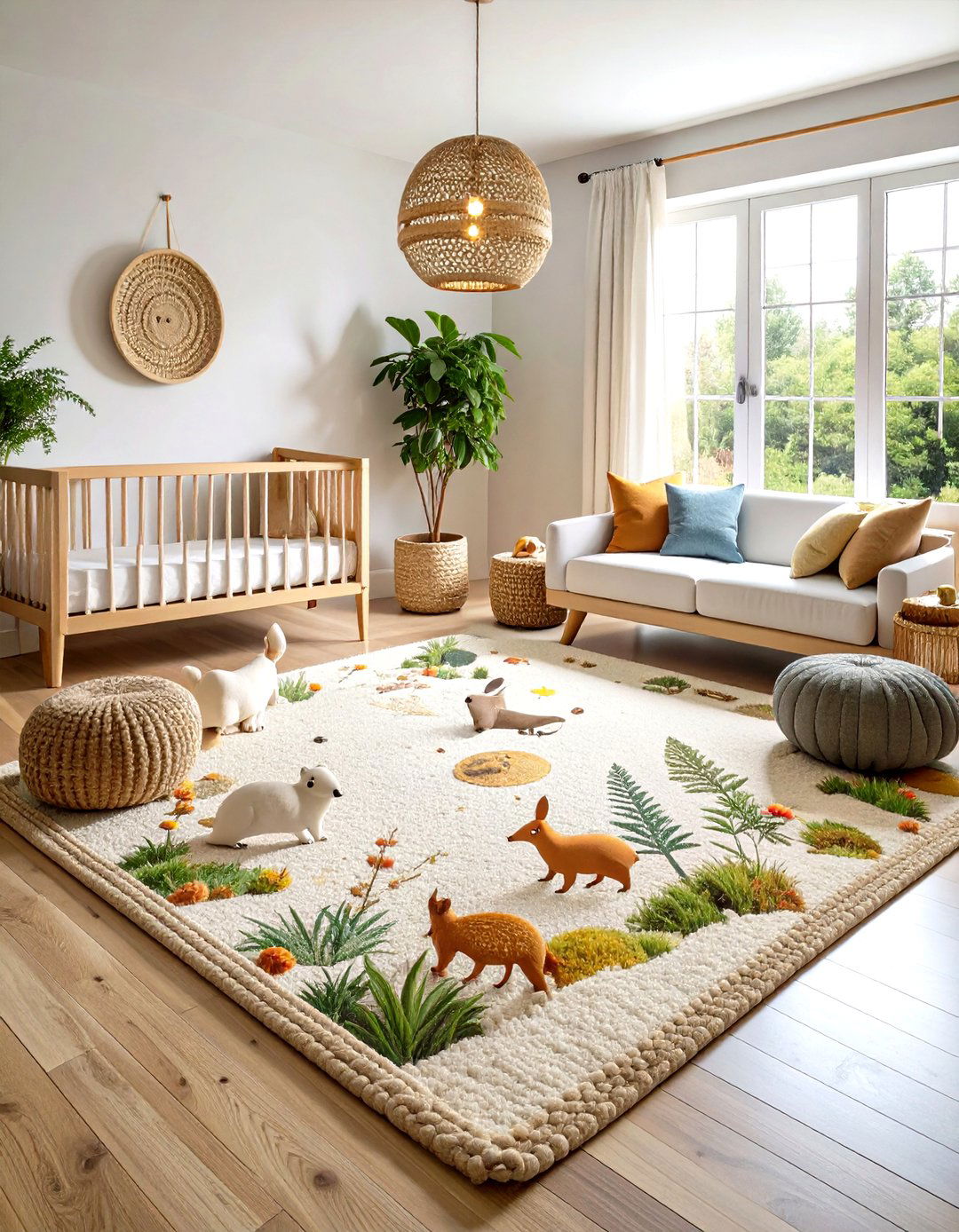
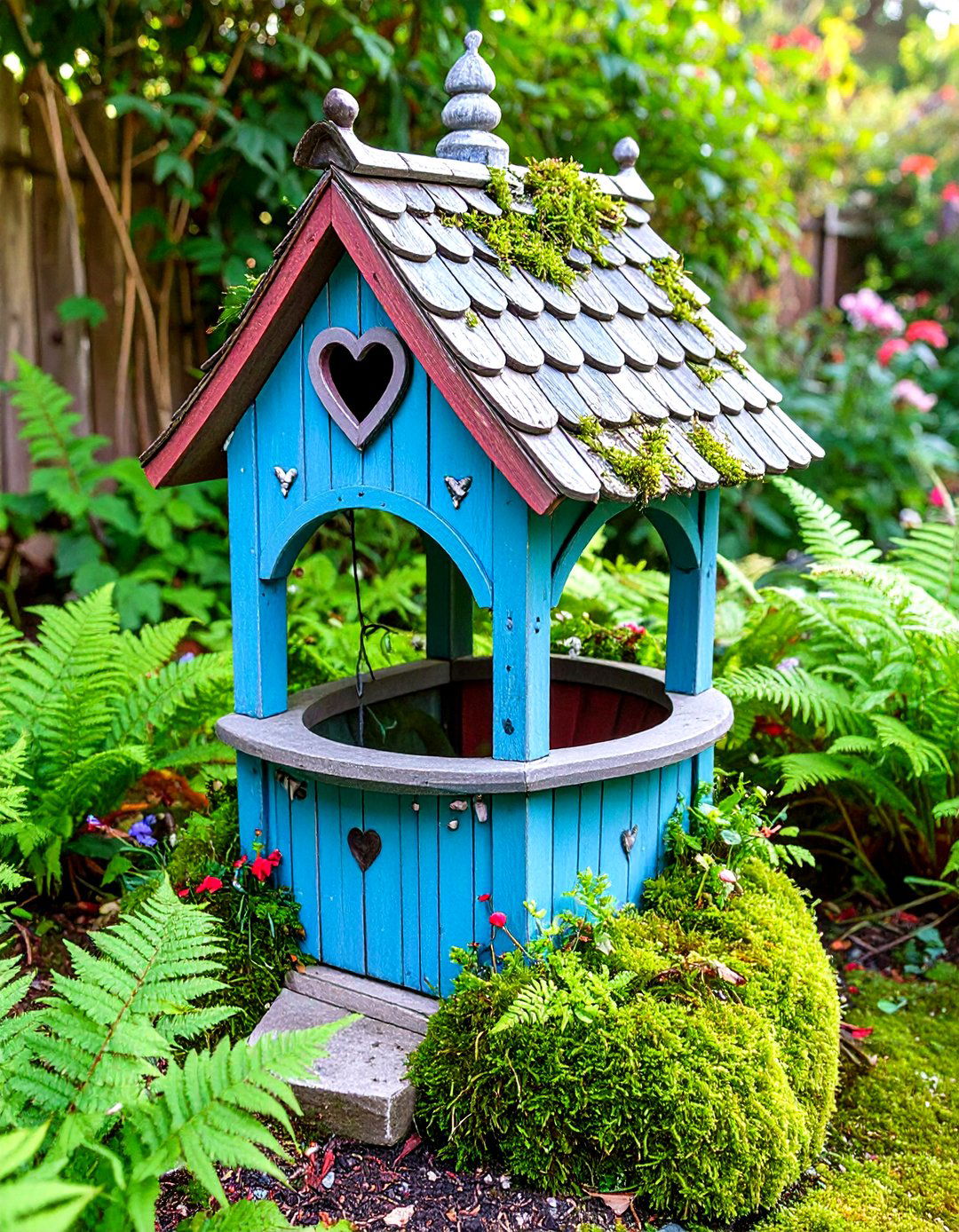
Leave a Reply